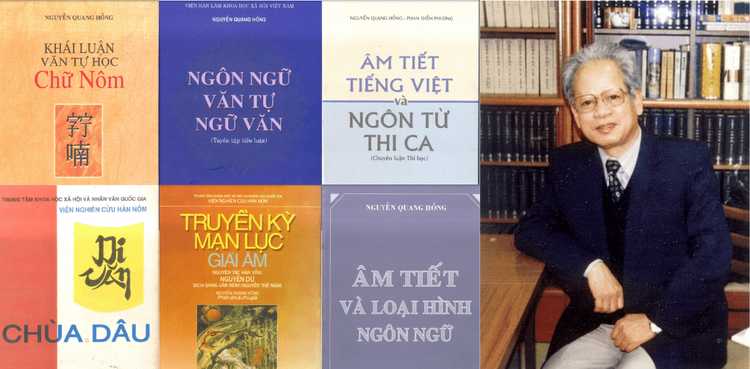
On the afternoon of October 7, 2025, Prof. Dr.Sci. Nguyễn Quang Hồng—who devoted his life to the studies of the Vietnamese language and the Hán–Nôm heritage—passed away, entering the vast silence beyond all language.
To the Professor, time—time lived—was the precious condition that made possible his reflections on that singular human invention: language. "The author sat at his desk and typed this monograph for more than a year. Yet the period during which he pursued the questions posed in the work adds up to over twenty years,” he confides in the preface to An Introduction to the Grammatology of Chữ Nôm, recalling his tireless pursuit of the great questions of Vietnamese and its writing. That unceasing research journey crystallized into major works gathered in the collection Language · Writing · Philology on Digitizing Vietnam—only “the tip of the iceberg,” layered over decades of reflection, investigation, and painstaking scholarly labor: concerns ranging from system to detail, from phonetics to literature, from antiquity to the present—all to reach the uttermost of the Vietnamese story.
In his scholarly rigor, the author rarely spoke about himself. The long, winding road—surely with many rough stretches—into the “uttermost ends” of the Vietnamese language is summed up by him in two sentences: “The author is a linguist who, together with linguistics, entered the study of Chữ Nôm and Hán–Nôm texts and works. Viewed in general, then, the author is someone passionately devoted to the work of our national philology.”
Prof. Dr.Sci. Nguyễn Quang Hồng was born in 1940 in Trà Kiệu village, Duy Xuyên district, Quảng Nam province. 1960–1965: studied in Beijing, graduated B.A. in Philology (Peking University, 1965). 1970–1974: graduate studies in Moscow; defended the Candidate of Philological Sciences (Moscow State University & the USSR Institute of Oriental Studies, 1974). 1982–1985: research fellow; defended the Doctor of Philological Sciences. He was appointed Associate Professor in 1984 and Professor in 1991.
The Language · Writing · Philology collection brings together Prof. Nguyễn Quang Hồng’s studies in linguistics, scriptology, and philology. Among them, Vietnamese Syllables and Poetic Language is a monograph co-authored with Dr. Phan Diễm Phương. The studies are diverse, spanning many phenomena and problems, and can be grouped into two main strands: (1) Linguistics and Vietnamese language studies; (2) Philology and Hán–Nôm studies. Digitized items in Digitizing Vietnam’s repository include:
❃ Syllables and Types of Language
❃ Language · Writing · Philology
❃ An Introduction to the Grammatology of Nôm
❃ Explanatory Notes on Truyền kỳ mạn lục
❃ Vietnamese Syllables and Poetic Language
❃ The Inscriptions of Dâu Pagoda: Cổ Châu lục – Cổ Châu hạnh – Cổ Châu nghi
SKETCHING A PORTRAIT OF VIETNAMESE IN LINGUISTICS: WHEN LINGUISTIC SENSIBILITY GUIDES SCIENTIFIC THOUGHT
Looking at Prof. Nguyễn Quang Hồng’s linguistic work on Vietnamese, we see not only weighty findings with wide interdisciplinary impact, but also a meticulous comparative program tracking movements within a language and across languages to find the right “frame” for analyzing Vietnamese. Alongside broad engagement with existing models is a guiding “linguistic sensibility”—a keen effort to reconstruct, scientifically, the inner psycholinguistic reality, rather than mechanically imposing a fashionable model.
From this foundation, he established that the tone-bearing syllable (syllabeme) is the minimal meaning-bearing unit of modern Vietnamese; the syllable’s structure is viewed as onset – rime (rime = nucleus + coda), while tone and the medial glide are properties of the whole syllable. Within this framework he situated Vietnamese in a comparative–typological context with other tone languages of East and Southeast Asia (Việt–Mường, Tai–Thai, Sinitic, Tibetic…), treating the syllable as central and analyzing in detail onset – rime – tone; he also bridged phonology and poetics, using verse (especially The Tale of Kiều) to test rhyme, distinguish full rhyme/allowable rhyme, and explain the aesthetic of “harmonious sound.”
In comparison with Chinese, he showed that intra-syllabic segmentation is clearer in modern Vietnamese (and Middle Chinese) than in modern Beijing Mandarin. Vietnamese is rich in reduplication (nhí nhảnh, bồi hồi…) and metathesis/wordplay; Middle Chinese had a comparable phenomenon (“fanqie-like manipulations”), whereas modern Beijing Mandarin tends toward full-syllable repetition (mànmànr, lànlànde), reducing intra-syllabic variation. Reading the Professor’s meticulous comparisons, one seems to step into a linguistic laboratory where diverse syllables are dissected and set in motion under the absorbed gaze of a scientist.
RESEARCH ON CHỮ NÔM: CONNECTING WITH THE WISDOM AND HEART OF GENERATIONS
One cannot speak of Prof. Nguyễn Quang Hồng without the now-classic studies of Chữ Nôm, such as An Introduction to the Scriptology of Chữ Nôm and the Explanatory Dictionary of Chữ Nôm.
An Introduction to the Scriptology of Chữ Nôm is a foundational work treating Nôm through historical linguistics – comparative scriptology – textual scholarship. It establishes a basic conceptual toolkit (language/script; tục tự, thổ tự, phương tự; “non-standard” Chinese characters; what “Chữ Nôm” is), situates Nôm within Vietnam’s traditional scripts (Cham, Thai; Dao Nôm, Ngạn Nôm, Tày Nôm…), and traces the origins and conditions of Nôm through Việt–Sinitic contact, Sino-Vietnamese readings, Lý-dynasty epigraphy, and hypotheses about its emergence. On that basis, he presents the Chinese character model (structure, formation, morphemes), contrasts typological traits of Nôm with other Sinitic-based scripts, distinguishes borrowed Chinese characters from Nôm creations, and proposes a general classification for Vietnamese Nôm.
The Explanatory Dictionary of Chữ Nôm marks a major advance in the study and explication of Nôm, illuminating the creativity and self-reliant spirit of the Vietnamese in language. Based on 124 classical works/texts, each entry has clear provenance with contextual examples.
“By engaging with the Hán–Nôm heritage, we simultaneously engage with the intellect and the heart of countless generations of our forebears across every sphere of our country’s social life in the past.”
The Professor emphasized: “Language—and with it, script—is not merely a vehicle for transmitting information, but a vehicle for transmitting culture, especially from one generation of the nation to the next.”
For him, researching Chữ Nôm was not only a scholarly passion but also a connecting mission, so that generations of Vietnamese might feel the intellect and singular creativity of their ancestors beyond the bounds of time.
SOLVING EVERYDAY RIDDLES WITH SCHOLARLY WIT: THE SHORT i AND THE LONG y
Alongside academic works, Prof. Nguyễn Quang Hồng wrote with humor and grace about everyday language puzzles. A widely loved essay is the story of the short i and the long y. It began with a letter from a technician who types on-screen text for Bình Thuận Television. Unsure whether to write công ti or công ty (“company”)—the director said one thing, the department head another—he asked if there was a rule.
A small matter that isn’t small: Prof. Nguyễn Quang Hồng answered in detail—over four pages—patiently moving from Ministry of Education rules (a syllable ending in the vowel i is written with i, except after u/y as in duy, tuy, quy) to conventions formed over centuries (long y in Sino-Vietnamese words; short i in native words). For the technician’s question, the Professor refused to clamp Vietnamese into a rigid right/wrong vise; instead he showed the calm vision of a scholar who has gone deep enough into the language to trust its resilient flexibility:
“I think that in actual writing practice we should not be too rigid, insisting on applying at once what has been propagated in school. Moreover, what we have learned in school must be tested in social reality; only then can we find more appropriate standards that we hope will be accepted by everyone. If necessary, I am also ready to write ‘công ty’ to suit the ‘taste’ of your supervisor—which may also be the wish of the company that is your agency’s partner!”
He also gently corrected the writer for qui định instead of quy định (“regulation”): “As for quy, I don’t understand why you follow some others in writing qui. Granted, whether you write quy or qui you still pronounce it q + uy, but writing with -ui veers off from the series of words that all rhyme in -uy: duy, huy, luy, tuy, suy, nguy, etc.” The rigor of the linguist led him to catch an “error” not against external rules but against the internal dynamics of the language. “In this case—even if my boss threatened to dock my pay or fire me—I would still write Quy, and would by no means ‘shorten’ it to Qui, mind you,” he quipped—reminding the technician to safeguard Vietnamese, signing off with the colloquial đâu nghe (“mind you”) like a gentle word to a friend. In the stately pages of Language · Writing · Philology, that letter and those two words seem to reveal another face of the author—warm, familiar, simple: a Vietnamese who loves Vietnamese.
The “patchwork rustic words” above can hardly capture the roving dedication of Prof. Dr.Sci. Nguyễn Quang Hồng—a man who went to the farthest reaches of language, touching the finite frontier of a human life. Recall the word “hundred years” in Kiều’s line “Trăm năm trong cõi người ta,” meaning a human lifetime in this world: the character “hundred” (bách 百) set beside lâm 林—the finite beside the infinite. Digitizing Vietnam hopes to join readers in connecting with this finite collection and to grant the work a new “hundred years” of life—to carry the finite toward the infinite.
👉 Read the Language · Writing · Philology Collection:
https://www.digitizingvietnam.com/vi/our-collections/ngon-ngu-van-tu-ngu-van
👉 Read Tự điển Chữ Nôm Dẫn giải:
https://www.digitizingvietnam.com/vi/tools/han-nom-dictionaries/tu-dien-chu-nom-dan-giai
❀ Our deepest gratitude to Prof. Dr.Sci. Nguyễn Quang Hồng (1940–2025) for the legacy he leaves to posterity.
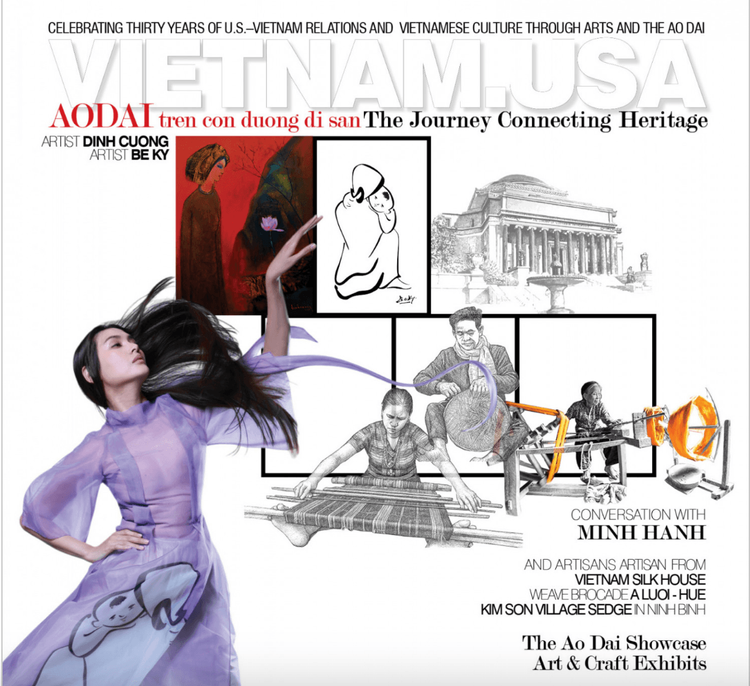
Global Vietnam Studies at the Weatherhead East Asian Institute and Vietmode proudly present The Journey Connecting Heritage, a special program marking 30 years of U.S.–Vietnam reconciliation and celebrating the richness of Vietnamese culture through arts, crafts, and the iconic national dress, the áo dài.
Art & Craft Exhibits
Explore silk weaving, embroidery, rattan work, and painting presented by artisans dedicated to preserving and revitalizing Vietnam’s cultural heritage.
Minh Hanh is one of Vietnam’s most celebrated fashion designers and a pioneer in integrating traditional crafts into modern design. Recognized for her innovative approach that blends ethnic fabrics, motifs, and embroidery with contemporary aesthetics, she has elevated the áo dài into a global symbol of artistry and cultural pride.
Her practice often combines fashion with education, engaging artisans, students, and scholars in workshops that preserve and reimagine Vietnam’s textile traditions. Minh Hanh’s contributions have earned her widespread recognition, including:
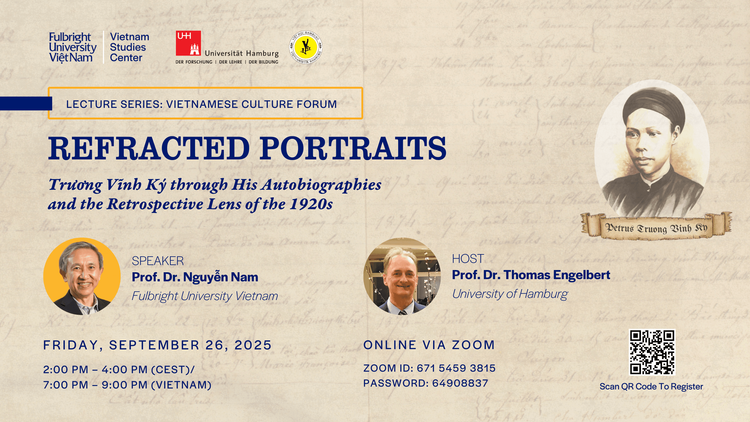
Date & Time: Friday, September 26, 2025 | 19:00–21:00 (GMT+7) | 14:00–16:00 (CEST)
Format: Online Talk, Vietnamese Culture Forum Lecture Series
Zoom Access: Webinar ID 671 5459 3815 | Passcode 64908837
Few names provoke as much debate in modern Vietnamese intellectual history as Petrus Trương Vĩnh Ký (1837–1898). Was he a colonial collaborator, a pragmatic intellectual navigating fraught circumstances, or a Catholic patriot committed to a distinct vision of national loyalty? Generations of scholars—Vietnamese and foreign, Marxist and non-Marxist—have offered divergent readings of this complex polymath.
The recent rediscovery of his autobiographical manuscripts offers us a rare opportunity: to examine how Trương chose to narrate his own life, and to reconsider the ways in which later authors refracted and reshaped his self-portrait to serve different cultural and ideological agendas.
In this talk, Dr. Nguyễn Nam (Fulbright University Vietnam) will guide us through the interplay between Trương’s autobiographies and subsequent portrayals, focusing on figures such as Jean Bouchot and Huyền Mặc Đạo Nhân Dương Mạnh Huy.
Dr. Nam argues that none of these accounts—Trương’s included—are neutral reflections. Instead, they are refracted images, shaped by the cultural, political, and intellectual lenses of their times. By situating Trương’s own voice alongside those who appropriated it, this lecture invites us to question not only what we know about Trương Vĩnh Ký but also how historical memory itself is constructed.
This event is part of the Vietnamese Culture Forum Lecture Series, organized as a collaboration between Vietnam Studies Center, Fulbright University Vietnam with the University of Hamburg. The series brings together leading voices in Vietnam Studies to foster dialogue across borders and disciplines.
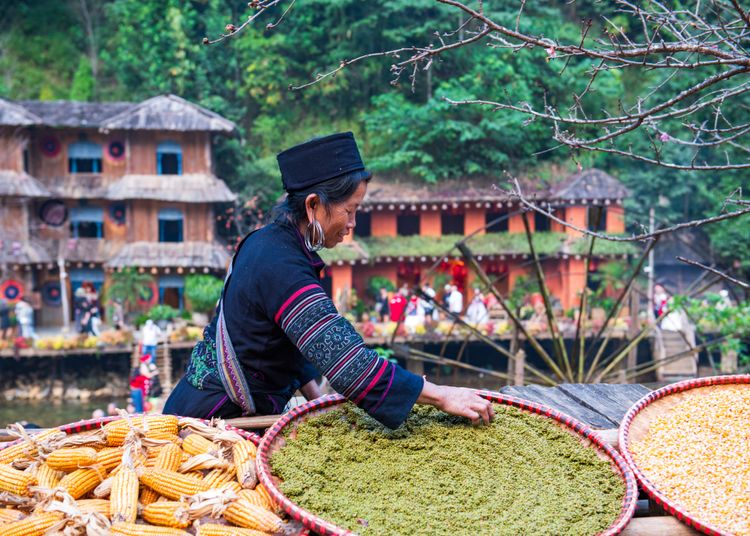
The Anthropology of Vietnam: Global Perspectives
📅 June 16–19, 2026
📍 Dalat University, Vietnam
Digitizing Vietnam is pleased to share the call for papers for the international conference The Anthropology of Vietnam: Global Perspectives, hosted by Dalat University from June 16–19, 2026.
Marking the 25th anniversary of Anthropology within the Vietnam National University system, the conference brings together scholars from Vietnam and abroad to reflect on the growth and internationalization of Vietnamese anthropology.
Highlights:
Key themes: balancing Vietnam’s uniqueness with global processes; strengthening Vietnamese anthropology locally & internationally; fostering collaboration while addressing academic hierarchies; Vietnam’s contribution to decolonizing anthropology.
Structure: 2.5 days of panels and keynote lectures (June 16–18) and study trips in Lam Dong province (June 19).
Bilingual sessions: English and Vietnamese with simultaneous interpretation.
Participation:
Presenters: Submit title + 250-word abstract by December 1, 2025 via submission form.
Observers: Register by April 1, 2026 via email: vian2026@hcmussh.edu.vn.
Funding: There are no registration fees for the conference. Participants from outside Vietnamese institutions will be responsible for their own travel to Dalat, accommodation, and a small transportation contribution for the local excursions on the final day. The organizing committee is committed to minimizing these expenses wherever possible.
📩 For more details: vian2026@hcmussh.edu.vn
👉 Full PDF announcement available here.
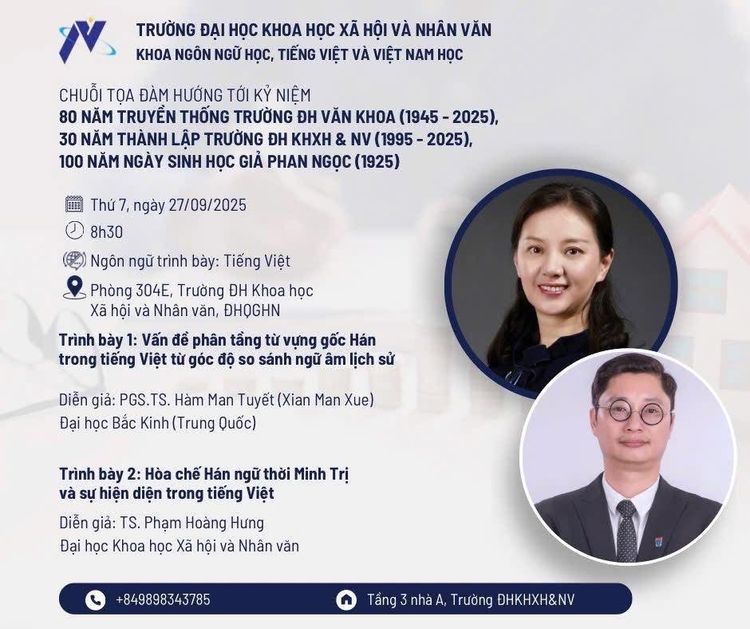
🗓 Time: 8:30 AM, Saturday, September 27, 2025
📍 Venue: Room 304E, University of Social Sciences and Humanities, VNU Hanoi
🌐 Language of presentation: Vietnamese
Presentation 1: The Stratification of Sino-Vietnamese Vocabulary from the Perspective of Historical Phonological Comparison
Speaker: Assoc. Prof. Dr. Xian Manxue – Professor at Peking University (China), specialist in historical linguistics and comparative Sino–Vietnamese lexicology.
Presentation 2: Sino-Japanese Lexicon of the Meiji Era and Its Presence in Vietnamese
Speaker: Dr. Phạm Hoàng Hưng – Lecturer at the University of Social Sciences and Humanities, VNU Hanoi, researcher in language contact, Sino-Vietnamese vocabulary, and the history of the Vietnamese language.
📞 Contact: +849898343785
📍 Office: 3rd Floor, Building A, USSH, VNU Hanoi
This is a valuable opportunity to meet, exchange, and learn from the insightful academic perspectives of two distinguished scholars in the field of Sino–Vietnamese linguistics.
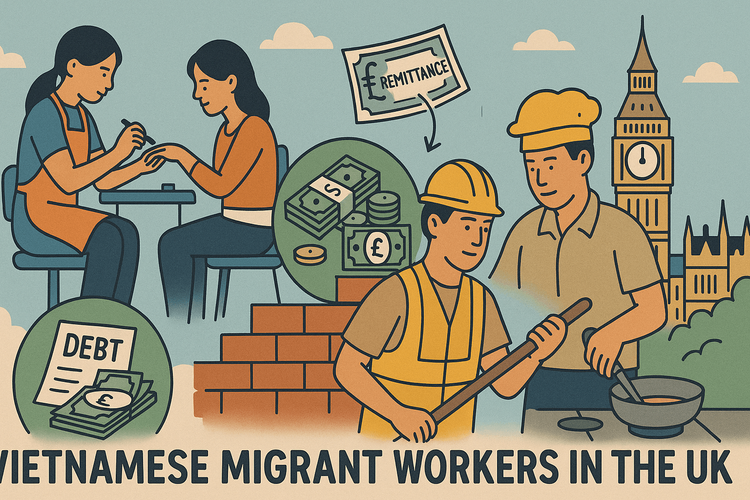
The forthcoming CHASM seminar will be delivered by Dr Seb Rumsby, Leverhulme Early Career Fellow at the University of Birmingham’s Institute for Research into International Migration and Superdiversity (IRiS), on September 30th, 2025. Dr Rumsby is an interdisciplinary scholar whose research encompasses everyday politics, migrant labour exploitation, irregular migration, ethno-religious politics, grassroots development, and financialization.
This presentation examines the strategies by which marginalized labour migrants endeavour to sustain livelihoods in the context of precarious employment, indebtedness arising from migration financing, remittance obligations, and inflationary pressures. Focusing on the recent migration of Vietnamese workers to the United Kingdom, the seminar situates migrants’ financial and employment decisions within the broader political economy shaped by financial and immigration regimes in both sending and receiving countries. Drawing on extensive ethnographic fieldwork with the Vietnamese community in the UK, Dr Rumsby will analyse the rationales underpinning migrants’ economic practices amidst legal precarity and exploitative labour conditions.
For registration, visit the University of Birmingham event page.
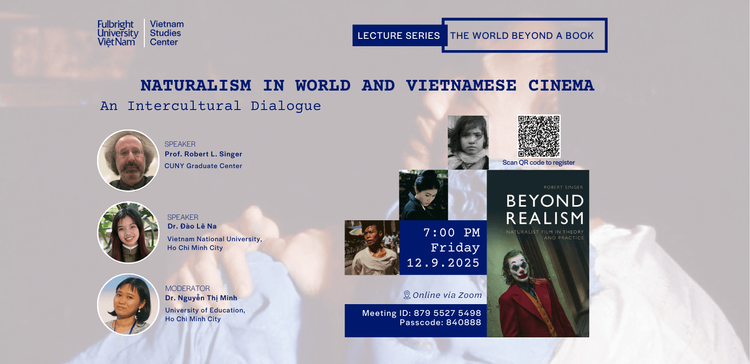
The Vietnam Studies Center, as part of its The World Beyond A Book series, invites participants to the upcoming online dialogue “Naturalism in World and Vietnamese Cinema: An Intercultural Dialogue” on 12 September 2025. The event will feature the presentation “Unpleasant Aesthetics: Naturalist Cinema in Theory and Practice”, tracing naturalism in film from its philosophical and artistic roots in the 19th century to its contemporary global presence. Moderated by Dr. Nguyễn Thị Minh, the discussion brings together Prof. Robert L. Singer (CUNY Graduate Center) and Dr. Đào Lê Na (Vietnam National University, Ho Chi Minh City), highlighting how naturalism, rather than idealizing, engages with the raw realities of poverty, labor, addiction, and marginalization.
The session will spotlight key works in Vietnamese cinema, including Girl from Hanoi (Hai Ninh, 1974), Return (Đặng Nhật Minh, 1994), Cyclo (Trần Anh Hùng, 1995), and Aimless (Phạm Nhuệ Giang, 2013), alongside films by Yasujirō Ozu, Wang Bing, Jayant Somalkar Digambar, and Carlota Pereda. A special speaker highlight is Prof. Robert L. Singer, a leading scholar of film history and aesthetics, author of Beyond Realism: Naturalist Film in Theory and Practice (2024), and co-editor of the “ReFocus: American and International Film” series. With his background in both scholarship and filmmaking, Prof. Singer’s perspective bridges theory and practice, promising rich insights into the global and intercultural dimensions of naturalist cinema.
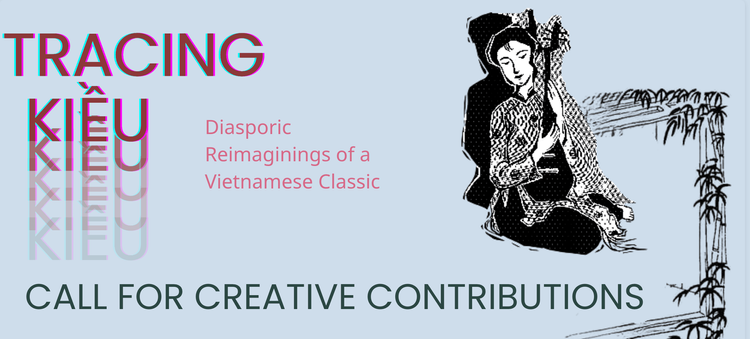
Tracing Kiều invites creators across the global Vietnamese diaspora to reimagine The Tale of Kiều through contemporary lenses of identity, migration, and belonging. A core method is bói Kiều—opening the poem for guidance and letting a line, image, or theme spark new work. The project is diaspora-led and developed in dialogue with advisors at the Diasporic Vietnamese Artists Network (DVAN).
The call welcomes writers, visual artists, designers, filmmakers, and performers across generations; Vietnam-based contributors and cross-border collaborations are encouraged. Accepted forms include short fiction, poetry, essays, creative dialogues, short scripts; illustration, comics, collage, photography, photo–text, and storyboards; plus documentation of installation, video, sound, and performance (2D material for print). The focus is on creative works (not Q&A); new and existing works are both eligible; first-person pieces—letters, monologues, or narrative forms shaped from conversation (with consent)—are welcome.
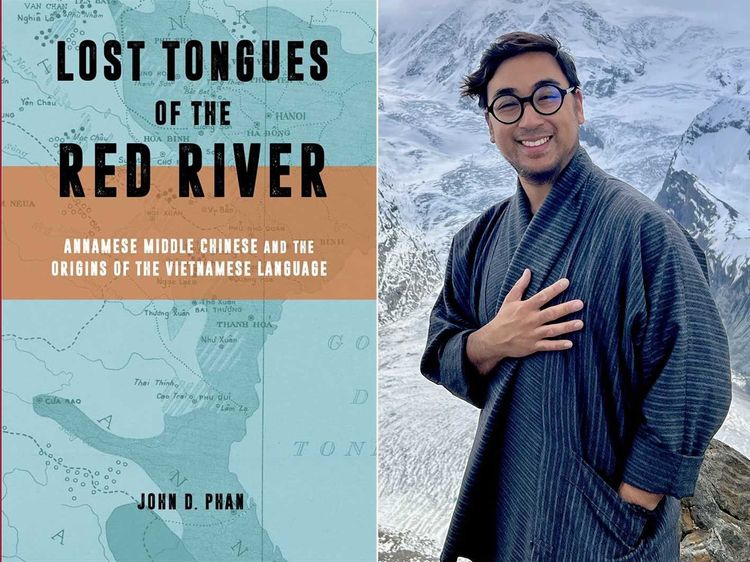
The Weatherhead East Asian Institute congratulates faculty member John D. Phan, Associate Professor of Vietnamese Humanities in the Department of East Asian Languages and Cultures and a co-founder of Global Vietnam Studies at Columbia University, on the publication of his first book.
Released by the Harvard University Asia Center this spring, the evocatively titled Lost Tongues of the Red River: Annamese Middle Chinese and the Origins of the Vietnamese Language uncovers the emergence of Vietnamese under the influence of a lost Sinitic (Chinese) language Professor Phan calls “Annamese Middle Chinese,” native to an area of northern Vietnam, in the early centuries of the second millennium C.E.
Professor Phan says that although Lost Tongues of the Red River is rooted in a premodern Southeast Asia, it centers on a set of concerns that are highly relevant to the work of the Weatherhead East Asian Institute. Revealing the Vietnamese language’s tangled roots in an older Sinitic language, Lost Tongues situates it in a cosmopolitan, linguistically shifting milieu that doesn’t align with nation-state borders on any map.
By unearthing this multilingual mixed society, the book refutes what Professor Phan describes as a “very modern mindset”—the idea that “language, nation, culture, and ethnicity all form a monolithic block,” which in his view “doesn’t conform to reality.”
“Language shows us that modern nation-state configurations of identity can have a destructive or limiting influence on how we understand the ancient past.”
Professor Phan has lived with this material for many years. The book is rooted in the dissertation that he defended at Cornell in 2012, and he submitted a first draft of the manuscript during the Covid-19 pandemic.
For this monograph, Professor Phan drew on linguistic, philological, and historical methodologies. He conducted field work in north central Vietnam, excavating languages of the Mường, Vietnam’s third-largest minority, and also drew on the archives of the Institute for Sino-Nom Studies in Hanoi, the largest collection of Sino-Vietnamese manuscripts in the world.
How does it feel to have completed his first book? “It’s important to have things in a published, material form,” he tells us, “out in the wild, where other scholars can interact with it.”
Professor Phan goes further into his motivations for writing Lost Tongues of the Red River in an extensive (and highly recommended) June interview with Columbia News. In that conversation he also shares some recommendations from his recent reading and, even better, offers a preview of his next book project. That book will bring Professor Phan’s research up into the 17th and 18th centuries by tracking the rise of Vietnam’s vernacular language, in the form of the Chữ Nôm character script, and demonstrating how that vernacular enabled the creation of “new forms of literature.”
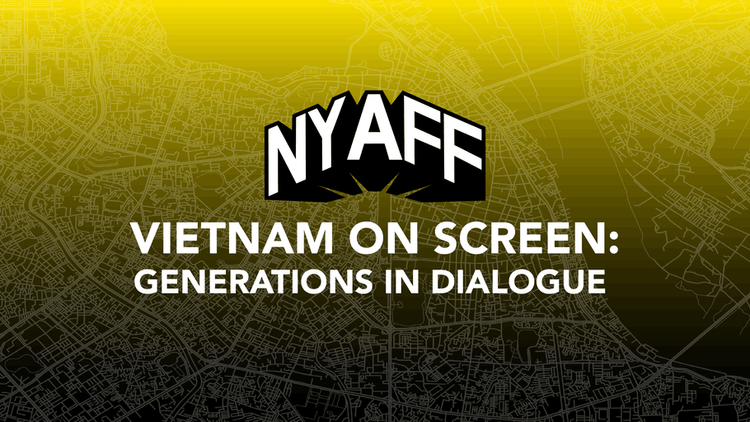
On the evening of July 19, 2025, Columbia University played host to Vietnam on Screen: Generations in Dialogue, a landmark event celebrating the dynamic voices shaping contemporary Vietnamese cinema. Co-hosted by the Weatherhead East Asian Institute (WEAI) and the New York Asian Film Festival (NYAFF), the event brought together filmmakers, artists, and audiences for a night of conversation, connection, and cinematic exploration.
The evening opened with remarks by Ambassador Đỗ Hùng Việt, Vietnam’s Permanent Representative to the United Nations, whose presence set a tone of cultural diplomacy and artistic bridge-building. This was followed by a thought-provoking panel discussion moderated by filmmaker Tony Bui, director of the award-winning Three Seasons, Artist-in-Residence at WEAI, and curator of Criterion’s Legacies of War series.
The panel featured three generations of Vietnamese and Vietnamese-American creative voices:
Together, the speakers reflected on their creative journeys, the evolution of Vietnamese film at home and abroad, and the role of cinema in fostering global dialogue around history, identity, and imagination.
Following the panel, guests gathered for a lively reception that furthered the spirit of community and cross-cultural exchange.
The evening concluded with the U.S. premiere of Skin of Youth, the latest feature from Vietnamese-born director Ash Mayfair, celebrated internationally for her debut The Third Wife. Set in a dreamlike vision of 1990s Saigon, the film tells the story of San, a transgender cabaret performer, and Nam, her lover and underground fighter, as they navigate love, danger, and the search for liberation amidst societal constraints. With lush cinematography and a tender but unflinching gaze, Skin of Youth is a bold meditation on gender, intimacy, and resilience. The screening was introduced by representatives from the festival and the director.
More than just a celebration of film, Vietnam on Screen spotlighted the power of storytelling to connect generations, geographies, and futures. In its blend of art and dialogue, the evening underscored Vietnamese cinema’s growing role on the global stage—and its ability to speak to our shared human experiences.
Weatherhead East Asian Institute (Columbia University)
A premier research institute for East Asian studies, WEAI fosters dialogue across cultures and disciplines through events, residencies, and academic programming.
New York Asian Film Festival (NYAFF)
Founded in 2002, NYAFF is one of North America's leading showcases for Asian cinema, renowned for celebrating bold and original voices from across the continent.
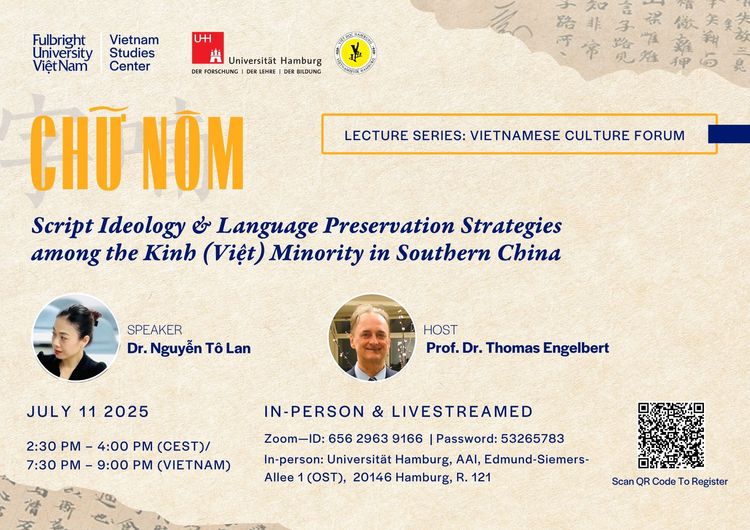
The Vietnam Studies Center at Fulbright University Vietnam, in collaboration with the Department of Vietnamese Studies at Universität Hamburg, cordially invites you to the third session of the Vietnamese Culture Forum lecture series:
“Chữ Nôm: Script Ideology and Language Preservation Strategies among the Kinh (Việt) Minority in Southern China”
🗓 Date: Friday, 11 July 2025
🕑 Time: 2:30 – 4:00 PM (Central European Summer Time)
7:30 – 9:00 PM (Vietnam Time)
📍 Venue: Universität Hamburg – Asien-Afrika-Institut, Edmund-Siemers-Allee 1, Room 121 (in person)
💻 Zoom Livestream:
Zoom ID: 656 2963 9166
Password: 53265783
This talk will examine the symbolic and functional role of chữ Nôm as a cultural script and explore the strategies used by ethnic Vietnamese (Kinh) communities in Southern China to preserve their language and cultural identity. Through insights from fieldwork and interdisciplinary research, Dr. Nguyễn Tô Lan will present a critical perspective on script consciousness, linguistic identity, and transnational heritage politics.
The event will be conducted in English and is open to the public.
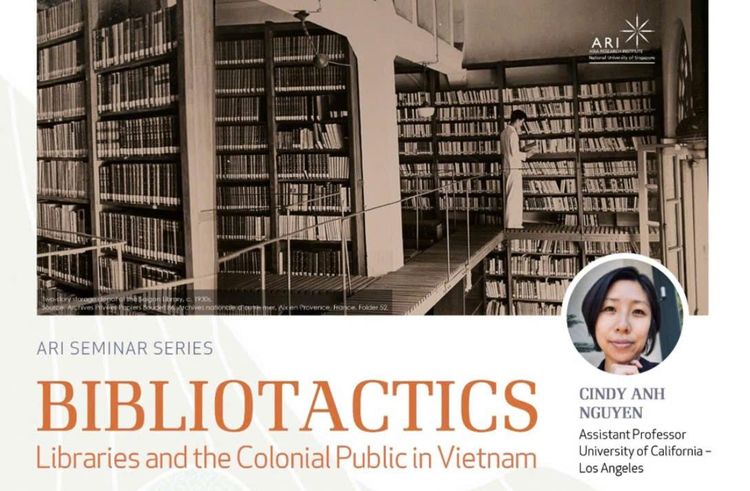
The Asia Research Institute (ARI) will host a webinar on August 14, 2025, titled Bibliotactics: Libraries and the Colonial Public in Vietnam, featuring Dr. Cindy Anh Nguyen, Assistant Professor at UCLA. In this seminar, Dr. Nguyen will examine how Vietnamese readers reimagined and repurposed colonial libraries in Hanoi and Saigon, turning them into spaces of critique, education, and civic engagement that challenged imperial intentions. Drawing on her book published by the University of California Press, she explores the complex role of libraries in shaping colonial and postcolonial publics in Vietnam and across Southeast Asia.
📍 Hybrid format: NUS AS8 04-04 and Online via Zoom
🕓 Time: 4:00–5:30 PM (SGT)
The event promises insights into the history of information, censorship, and public knowledge under colonial rule.
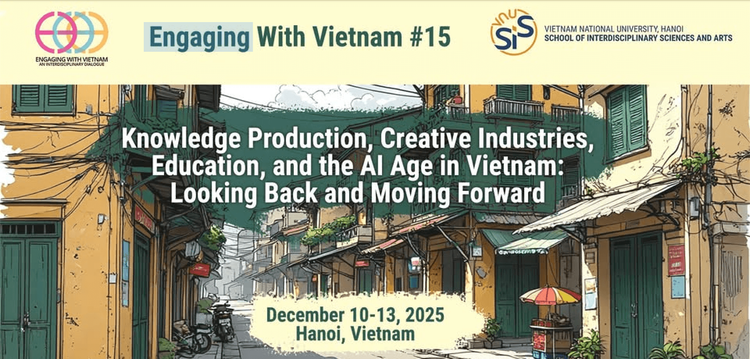
Digitizing Việt Nam is pleased to share the latest announcement from the 15th Engaging With Vietnam Grand Event, a major international conference that will take place from 10–13 December 2025 in Hanoi, Vietnam, in collaboration with the School of Interdisciplinary Sciences and Arts, Vietnam National University Hanoi (SIS-VNU Hanoi).
This year’s theme: “Knowledge Production, Creative Industries, Education, and the AI Age in Vietnam: Looking Back and Moving Forward” invites scholars, artists, educators, and innovators to critically reflect on Vietnam’s dynamic intersections between knowledge, creativity, and technology.
Full conference details and proposal submission instructions are available at: https://engagingwithvietnam.org
Key Dates
We encourage researchers and practitioners across disciplines to contribute to this exciting milestone in the Engaging With Vietnam journey.
Please help us circulate this information widely!
For further updates, follow Engaging With Vietnam and join us in Hanoi this December as we explore the past and future of Vietnam’s intellectual and cultural landscapes.
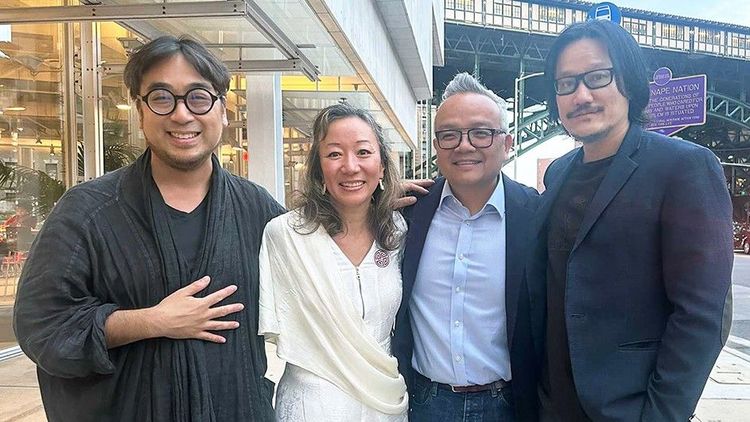
Fifty years ago, the United States lost a war to a country that few Americans could find on a map; in the intervening decades, however, more has been written on the Vietnam War than most of America’s other conflicts. Why?
On the semi-centennial anniversary of the fall of Saigon on April 30, 1975, the Weatherhead East Asian Institute (WEAI) set out to answer that question by mounting a profound and moving three-day symposium. It commemorated not one milestone, but two—the 50th anniversary of the end of the Vietnam War and the 30th anniversary of U.S.-Vietnam reconciliation.
Presented in partnership with the Journalism School, Columbia Global, and the School of the Arts, 50-30: From War to Peace in Vietnam and the United States (April 30-May 2, 2025) was one of the most high-profile, international commemorations of these milestones outside of Vietnam. By convening an extraordinary group of historians, writers, artists, activists, and filmmakers, as well as diplomats and military veterans from both countries, the symposium addressed the legacies of the war in Vietnam, particularly from perspectives south of the 17th parallel; the long road to reconciliation and the future of the U.S.-Vietnam Comprehensive Strategic Partnership; and the power of arts and culture to heal the wounds of war and promote peace in America and Vietnam today.
The four organizers, Columbia professors Tony Bui (School of the Arts and WEAI artist-in-residence), Lien-Hang Nguyen (History and WEAI director), John Phan (East Asian Language and Cultures), and Duy Linh Tu (Journalism), are Vietnam War refugees, or hail from the generation that fled Saigon in the 1970s. Reflecting on this anniversary, Nguyen said, “As a historian of the Vietnam War and co-founder of Global Vietnam Studies (GVS) at Columbia, the semi-centennial forced me to reckon with the tragedy of the past and how far we’ve come since 1975.”
Phan acknowledged the dual nature of the April 30th anniversary: “It is a day of well-deserved joy for millions of Vietnamese, of pride and of celebration. But for millions of other Vietnamese,” he continued, “it is a day of loss, grief, and trauma.” Billed as an integral part of Nguyen’s Global Core lecture course, The Vietnam War: A Special 50th Anniversary Edition, the conference attracted not only hundreds of students from the course, but also WEAI community members and those whose lives were touched by the Vietnam War.
The Wounds of War Will Heal
In the opening panel at Pulitzer Hall, New Histories of the Republic of Vietnam and the South Vietnamese Diaspora, historians delved into the latest research on the 30-year conflict, which ended with the fall of Saigon. Based on the recently published, three-volume Cambridge History of the Vietnam War, for which Nguyen was the general editor, the panel offered new directions from South Vietnam, the side most often overlooked in the Hanoi-and-Washington-centric histories. Combined with the subsequent panel featuring GVS co-founder Phan, along with literary scholars and critics dedicated to South Vietnamese literature, the message was: “The real civil war has ended. The wounds of war will heal. Successive generations are ready to rewrite a future history.”
But the story of the Vietnam War has an impact beyond historiography and literature: Contemporary Vietnamese-American politics is profoundly shaped by the past. Another panel, From the Fall of Saigon to Political Participation in the U.S., brought the diaspora narrative into the present day, as Tu engaged his panelists in an exploration of why many Vietnamese Americans, relative to other Asian Pacific islanders, tend to skew conservative in their politics. “The shadow cast by the fall of Saigon endures,” Tu said, “as intergenerational trauma and socioeconomic factors continue to influence Vietnamese political views in the United States.”
The keynote reception included a conversation between Bui and legendary Vietnamese-American actress Kieu Chinh, who regaled the audience with highlights of her career, which shows no signs of flagging after nearly 70 years. Photographs of Chinh attending film festivals with Chiang Kai-shek and Japanese actor Toshiro Mifune in the 1960s, and with Robert Downey Jr. in 2024, gave evidence of a perennial glamour. Chinh also discussed the hardships imposed by her abrupt exile from Vietnam in 1975, as well as her later professional triumphs like The Joy Luck Club and the recent HBO adaptation of Viet Thanh Nguyen’s novel, The Sympathizer.
Statecraft Takes Center Stage
Statecraft took center stage on Day Two with the program, From Enemies to Friends. WEAI Senior Advisor Thomas Vallely anchored discussions that explored the past, present, and future of U.S.-Vietnam relations. Vallely, along with another WEAI advisor, Chinh Chu, steered two panels that included current Vietnam ambassadors to the U.S., Nguyen Quoc Dzung, and to the United Nations, Dang Hoang Giang, as well as two former U.S. ambassadors to Vietnam, David Shear and Daniel Kritenbrink. They all reflected on the history of U.S.-Vietnam reconciliation and the future of the U.S.-Vietnam Comprehensive Strategic Partnership.
Branching beyond bilateral relations, Wafaa El-Sadr, who wears many hats at Columbia, chaired Lessons from U.S.-Vietnam Reconciliation: Roadmap for the World. This panel, which featured former Vietnam Ambassador to the UN Dang Dinh Quy, assessed whether the restoration of ties between the one-time combatants offers a viable model for the rest of the world.
The Cathartic Power of the Arts
No commemoration of the end of the Vietnam War would be complete without addressing what is perhaps the most-watched documentary on the conflict: Ken Burns’s The Vietnam War, a fixture of Nguyen’s seminars on the war. Vallely and Burns had invited members of the team who made the documentary, including co-director Lynn Novick and co-producer Ho Dang Hoa, to discuss the making of the film. The conversation elicited heartfelt testimonials from audience members of all ages—undergraduates to veterans—who described the powerful experience of watching the documentary.
Day Three highlighted two panels—Conversations Left Unsettled: Healing the Wounds of War, and Cinema, War, and Conscience—under the direction of Bui. Tapped to curate a special collection of Vietnam War movies for the Criterion Channel, Bui is adamant that Hollywood and the U.S. must not be the only voices of the cinematic Vietnam War narrative. “This anniversary is a time to reflect, not just remember,” Bui said. “I hope to present a more layered, human representation from all sides of the conflict.” Bui tried to promote a more nuanced understanding of a country too long perceived by outsiders through the lens of conflict, with the help of poet and novelist Nguyễn Phan Quế Mai—whose 2020 novel, The Mountains Sing, became an international bestseller—and Peter Steinhauer, an American photographer who has lived and worked in Vietnam for more than 30 years.
At the start of the final panel, Bui asked, “Can cinema remember what history forgets?” Vietnam Ambassador Giang’s response was a resounding yes, as his opening comments emphasized the Vietnam government’s support of the arts to promote greater understanding on both sides of the former conflict. School of the Arts Dean Sarah Cole echoed this sentiment by focusing on the importance of art in times of turbulence and war. In a talk between Bui and Phillip Noyce, the two filmmakers gave concrete examples of how movies can rescue the past from the dustbins of history.
“By highlighting and shaping our understanding of the past, and the responsibilities involved,” Bui said, “this isn’t just about writing history—it’s about memory, and memory shifts depending on who’s telling the story.”
A slideshow, complete lists of participants, and additional information about the 50-30 conference are available on the Weatherhead East Asian Institute’s website, and a complete playlist of 50-30 videos is available to stream on its YouTube channel.
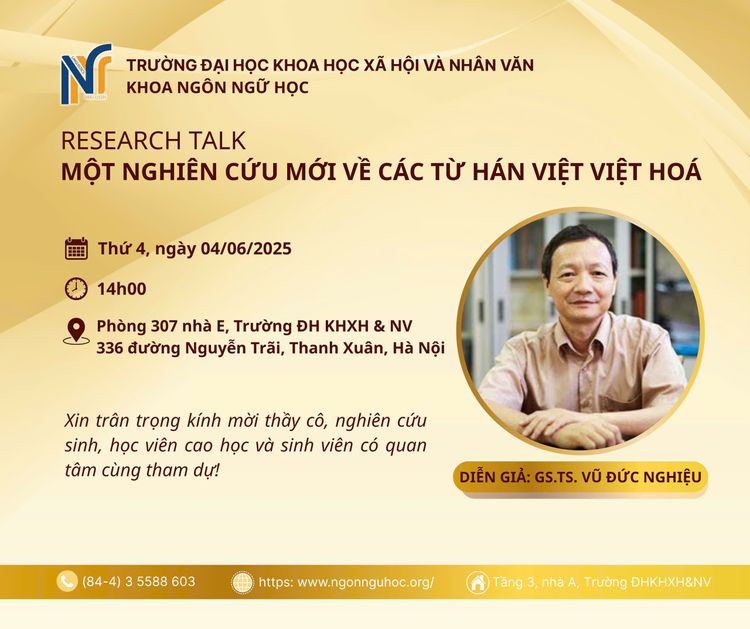
The Faculty of Linguistics, University of Social Sciences and Humanities, Vietnam National University, Hanoi, cordially invites faculty members, researchers, graduate students, and undergraduates to attend a Research Talk entitled "A New Study on the Localization of Sino-Vietnamese Words", presented by Prof. Dr. Vũ Đức Nghiệu—one of the leading scholars in the field of Vietnamese historical linguistics.
This talk will present Professor Nghiệu’s latest findings on the phenomenon of localized Sino-Vietnamese vocabulary, referring to the process by which Chinese-origin words, upon entering Vietnamese, not only retain certain phonetic features but also undergo semantic, syntactic, and usage transformations to better align with the native Vietnamese linguistic system. His research sheds new light on the localization of Chinese linguistic elements in the evolution of the Vietnamese language, while also opening pathways for interdisciplinary inquiries bridging linguistics, cultural studies, and Han-Nom philology.
📅 Time: 14:00, Wednesday, June 4, 2025
📍 Venue: Room 307, Building E, University of Social Sciences and Humanities,
336 Nguyễn Trãi Street, Thanh Xuân District, Hanoi
Prof. Dr. Vũ Đức Nghiệu is a distinguished scholar in Vietnamese linguistics. He has held several leadership positions at the University of Social Sciences and Humanities, VNU Hanoi, and has produced a significant body of research on linguistic acculturation, especially the historical influence of Chinese on Vietnamese. Throughout his academic career, he has been deeply engaged in the study of Sino-Vietnamese vocabulary, Han-Nom textual data, and medieval literature, making substantial contributions to the understanding of linguistic Vietnamization—particularly at the lexical level.
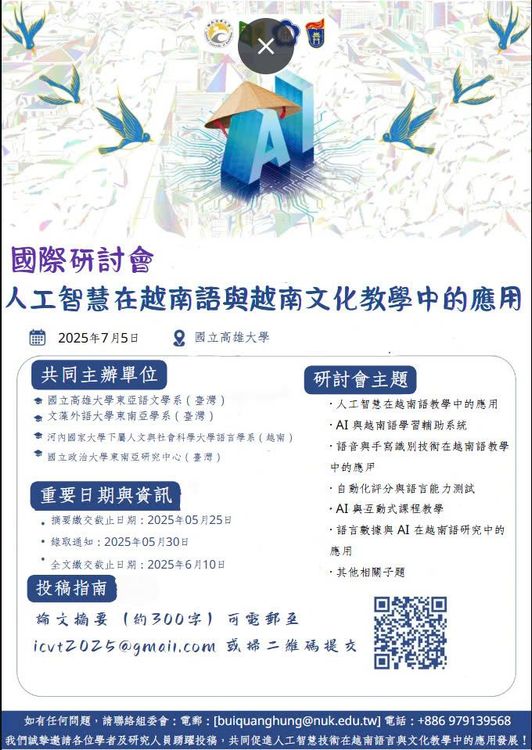
The International Conference on the Application of Artificial Intelligence (AI) in Teaching Vietnamese Language and Culture will be held on July 5, 2025, at the National University of Kaohsiung, Taiwan, in a hybrid format (both in-person and online). This event is co-organized by:
The conference offers a platform for scholars and educators to explore the integration of AI technologies into the teaching and learning of Vietnamese as a foreign language, as well as the dissemination of Vietnamese culture. Topics of interest include AI applications in language instruction, speech and character recognition, automated assessment, intelligent tutoring systems, and the use of linguistic data and AI in Vietnamese language and cultural research.
The Digitizing Việt Nam Project will participate in the conference and present a report titled: Digitizing Việt Nam: Digital Tools for Han-Nom Studies and Cultural Heritage Preservation.
Important deadlines:
Submissions can be sent via email to icvt2025@gmail.com or through the QR code provided in the poster. For further inquiries, contact ngocbinh@vnu.edu.vn.
Contributions from scholars and educators interested in the intersection of AI, language education, and cultural studies are warmly welcomed to participate.
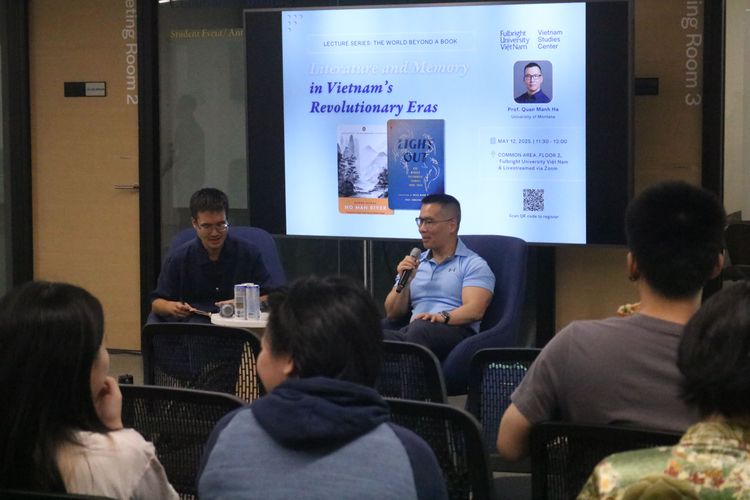
On May 12, the Vietnam Studies Center held the final seminar of the Spring semester in its ongoing series “The World Beyond the Book.” The guest speaker was Dr. Hà Mạnh Quân, a scholar of English Literature at the University of Montana (USA), as well as a translator and editor of several English-language anthologies of Vietnamese literature.
The talk took place as Vietnam looks ahead to two major anniversaries: the 80th anniversary of the August Revolution (1945–2025) and the 50th anniversary of national reunification (1975–2025). With the theme “Literature and Memory in Vietnam’s Revolutionary Periods,” Dr. Hà Mạnh Quân reflected on his experience translating two works: Light Out and Modern Vietnamese Stories, 1930–1954 and the novel No Man River (Bến không chồng) by author Dương Hướng. Both translations contribute to reconstructing significant cultural and political memories of Vietnam through the lens of literature.
Speaking about Light Out and Modern Vietnamese Stories, 1930–1954, Dr. Hà emphasized the diversity of voices and lived experiences captured in the collection. It opens a window into the layered and multifaceted lives of people during this period—where memory belongs not only to the victors, but also to mothers, wives, and marginalized individuals often forgotten in the grand narrative of revolution.
From a translation perspective, Dr. Hà highlighted the challenge of conveying culturally embedded nuances—from intimate family terms to words rich with meaning or unique to Vietnamese culture. A key priority, he noted, is to avoid excessive footnotes that disrupt the emotional rhythm of the text. Instead, his translations were refined in collaboration with native English-speaking creative writers to preserve the story’s natural flow and vitality.
The discussion also touched on the impact of artificial intelligence on translation. “The more we use it, the more we risk becoming dependent and losing the deeply human creativity of the translator,” he shared. Alongside scholarly analysis, Dr. Hà candidly expressed his own philosophy of translation: sometimes one must be bold enough to “take risks,” for only then can a translation preserve the creative spirit and honest vision of the original work.
The seminar concluded with engaging questions from the audience—not only on translation techniques and AI tools, but also on literature’s role in connecting generations, evoking collective memory, and preserving Vietnamese identity amid the currents of globalization.
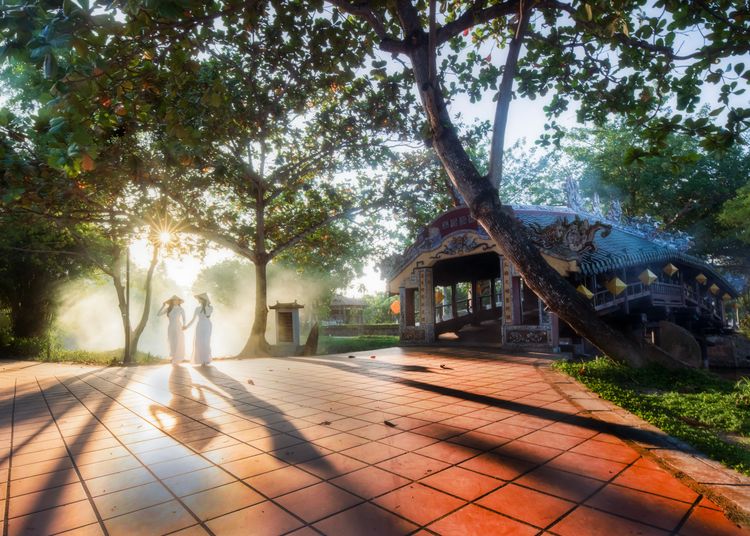
The 7th International Conference on Vietnamese Studies, themed Sustainable Development in the New Rising Era, will be held in October 2025. This large-scale academic forum of international stature will bring together scholars and researchers from Vietnam and around the world to review achievements, share experiences, and exchange academic insights in the field of Vietnamese studies.
The conference aims to identify key and urgent issues in Vietnam's path toward sustainable development in the context of globalization and rapid global changes. Participants will propose practical solutions to unlock national potential, inspire development aspirations, and implement national development strategies based on these discussions. Additionally, the event will promote global networking in Vietnamese studies and enhance the international image of Vietnam and its people.
This conference is a major scientific and technological event of the year, held in celebration of the 80th anniversary of the founding of the Democratic Republic of Vietnam.
For more information, please visit the official website of Vietnam National University, Hanoi.
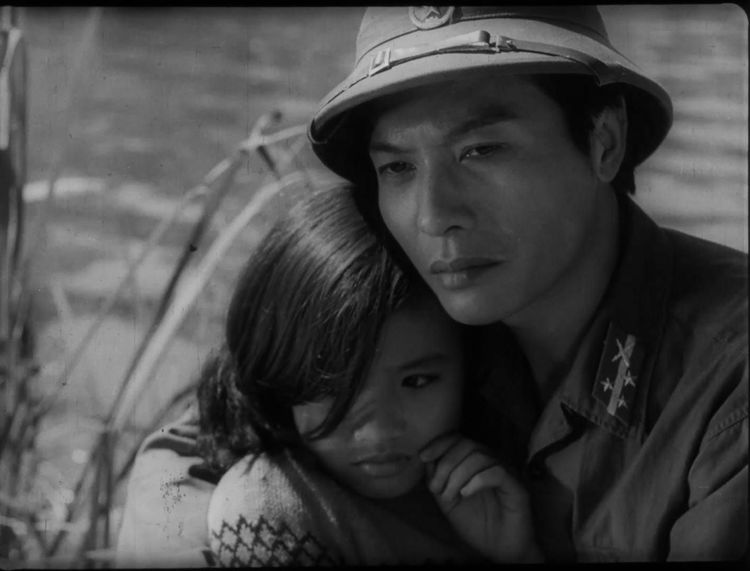
Fifty years after the end of the Vietnam War, its echoes continue to shape how the conflict is remembered and retold—across cultures, generations, and continents. In the United States, the war is often framed through the lens of American involvement, sacrifice, and trauma. In Vietnam, its legacy is more layered, encompassing both the costs of prolonged struggle and the aspirations for national reunification and renewal. For those who left the country during and after the war, memory is equally shaped by displacement, resilience, and the longing for home.
To mark this milestone, filmmaker Tony Bui has curated Legacies of War: Vietnam Across the Divides, a program on the Criterion Channel that brings together films from both Vietnam and the United States. Spanning several decades and genres—fiction and documentary, wartime and postwar, Vietnamese and American—these films offer a broader, more human view of the war and its aftermath. Many U.S. viewers may be familiar with landmark American titles like Platoon and Full Metal Jacket, but few have had the opportunity to engage with Vietnamese films like The Little Girl of Hanoi or When the Tenth Month Comes, which illuminate lives shaped by war in distinct and powerful ways.
This curated collection is not simply an act of remembrance—it is a conversation across cultures and histories. In the interview titled Tony Bui on the Vietnam War’s Cinematic Legacy, Bui discusses the importance of expanding how we see and understand the Vietnam War on-screen, and the enduring relevance of the stories these films continue to tell.
In an in-depth conversation with Criterion, Bui shares the inspiration behind the series, reflects on his own film Three Seasons, and discusses why these stories still matter today.
You can read the full interview with Tony Bui on the official Criterion Collection website, also accessible through Columbia University’s Weatherhead East Asian Institute website.
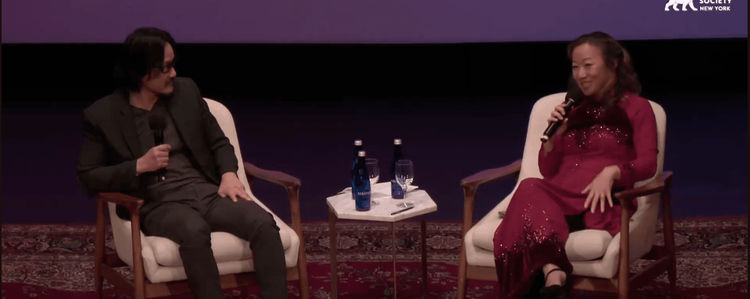
Three Seasons (1999), directed by Tony Bui, is a landmark in Vietnamese diasporic cinema—and a quietly radical reimagining of how we remember the Vietnam War and its aftermath. Selected by Vietnam as its official submission to the Academy Awards and honored at Sundance with the Grand Jury Prize, Best Cinematography, and Audience Award, the film’s impact continues to resonate 25 years later. In this video, presented during the “Vietnam at 50” conference at Columbia University, filmmaker Tony Bui and historian Professor Nguyen Thi Lien-Hang discuss the enduring legacy of Three Seasons—a cinematic time capsule that captures the sounds, poetry, and emotional undercurrents of Vietnam in the late 1990s.
Rejecting the dominant war narrative often seen in Hollywood productions, Three Seasons instead centers on the quiet resilience of ordinary people navigating a transforming postwar Vietnam. Told through three interwoven vignettes, the film meditates on memory, dignity, and the small but powerful choices individuals make in the shadows of historical trauma.
This conversation offers rare insight into Bui’s personal journey as a Vietnamese American artist—his emotional return to Vietnam at age 19, the influence of his mother’s poetry, and the challenges of making an independent Vietnamese-language film at a time when Vietnamese voices were largely absent from American screens. From working with Harvey Keitel to resisting stereotypical war tropes, Bui’s creative choices illuminate a deeper vision of reconciliation—one grounded in human connection, not battlefield spectacle.
Now digitally restored and newly celebrated by the Criterion Collection, Three Seasons stands as both a cinematic milestone and a cultural bridge—one that continues to speak to Vietnamese and international audiences alike. We invite you to watch this intimate and inspiring reflection on the film’s journey, meaning, and renewed relevance today.

The monograph The Everyday Politics of Resources: Lives and Landscapes in Northwest Vietnam by Associate Professor Nga Dao, Department of Social Sciences, York University (Canada), will be published by Cornell University Press on May 15, 2025.

This work offers a critical examination of the transformative effects of development initiatives—such as hydropower dams, rubber plantations, and mining operations—on the lives, livelihoods, and environments of communities in Northwest Vietnam. While these projects have generated significant profits for the state and private enterprises, they have also resulted in widespread displacement, impoverishment, and ecological degradation.
Drawing on more than two decades of in-depth ethnographic fieldwork, Professor Dao documents the highly uneven outcomes of these development processes. The monograph presents compelling narratives from individuals and communities who have faced dispossession and loss, alongside those who have adapted and, in some cases, benefited from these transformations. Through this nuanced analysis, The Everyday Politics of Resources provides an urgent and insightful contribution to debates on development, inequality, and environmental change in contemporary Vietnam.
We invite readers and scholars with interests in Southeast Asian studies, Vietnam Studies, development studies, anthropology, and political ecology to engage with this publication.
For more details, visit the official Cornell University Press page
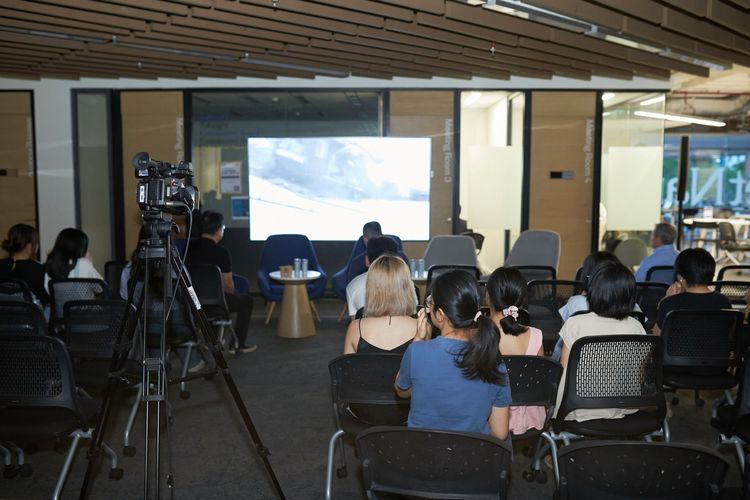
Following the conversation with director Bùi Thạc Chuyên during Fulbright University Vietnam’s Cinema Week, the roundtable "Screen, War, and Peace: Reflections on 50 Years of Reunification" took place on the evening of April 18, 2025, bringing together guests from across generations: directors Phan Đăng Di and Trịnh Đình Lê Minh, Dr. Nguyễn Nam, and student Nguyễn Anh Thư.
Through personal stories and cinematic memories, the discussion opened multiple avenues of reflection on how Vietnamese cinema portrays war—not only as a historical event but as an enduring trauma that continues to shape lives today.
Postwar Identities
Director Phan Đăng Di began with the image of the Vietnamese man across four stages of life—childhood, adulthood, middle age, and old age—captured subtly in his film Bi, Don’t Be Afraid! as a glimpse into postwar life.
"The postwar Vietnamese man is always chasing something unattainable," he shared. In Father and Son, he continued to explore generational fractures:
"Vietnamese society has an extraordinary ability to recover quickly, but it also has an enormous capacity for forgetting."
He emphasized that the lack of connection between generations is a quiet aftermath of the constant upheavals in national history—when memory is not fully passed down, and each generation becomes engrossed in its own separate world.
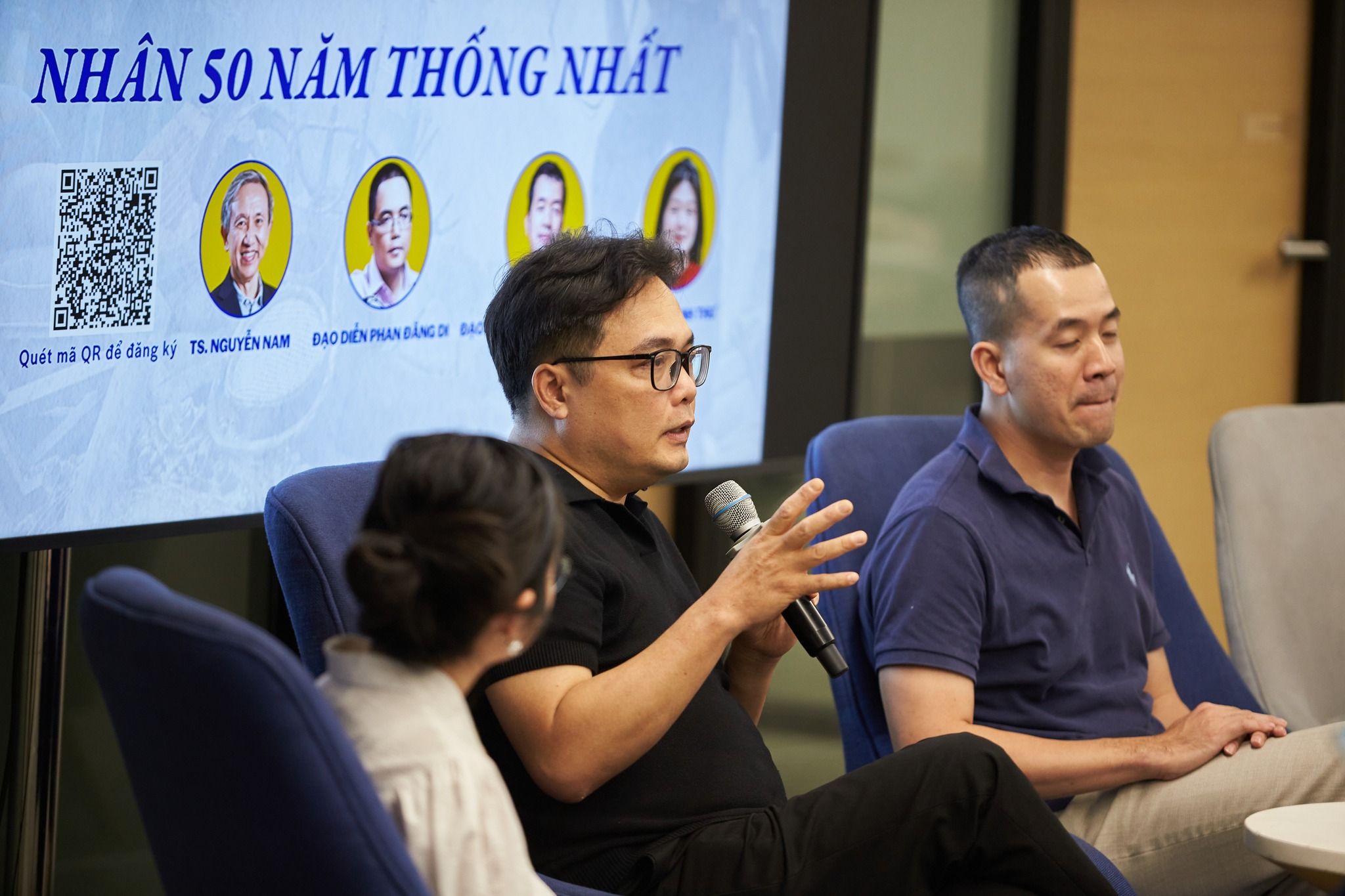
Women: Silent witnesses of history
While Phan Đăng Di portrayed postwar life through the lens of men, director Trịnh Đình Lê Minh led audiences toward the unspoken realities of postwar women.
In Goodbye Mother, the figure of the Vietnamese mother appears gentle yet resilient in her silence:
"She never complains, but her eyes reveal the depth of her love for her child."
In Once Upon a Time There Was a Love, he describes the film as a "fairy tale love story" and a journey of healing from the wounds of war memory.
"I treasure this work because it allowed me to explore the inner world of women—those who quietly choose between love and duty," he shared.
Throughout war and peace, in his cinematic perspective, women are the ones who mend the wounds of history with silent tenderness.

Gen Z & shared memory
Representing Gen Z at the roundtable, student Nguyễn Anh Thư from Quảng Trị shared her generation's sense of responsibility toward history:
"I grew up with my elders' words: 'Your mission is to live well.' Those words inspired me to tell the story of my hometown through educational tours and community projects."
For Thư, cinema is not only a means for young people to approach history but also a bridge for empathy with memories they never personally lived through—memories conveyed through images and emotions.
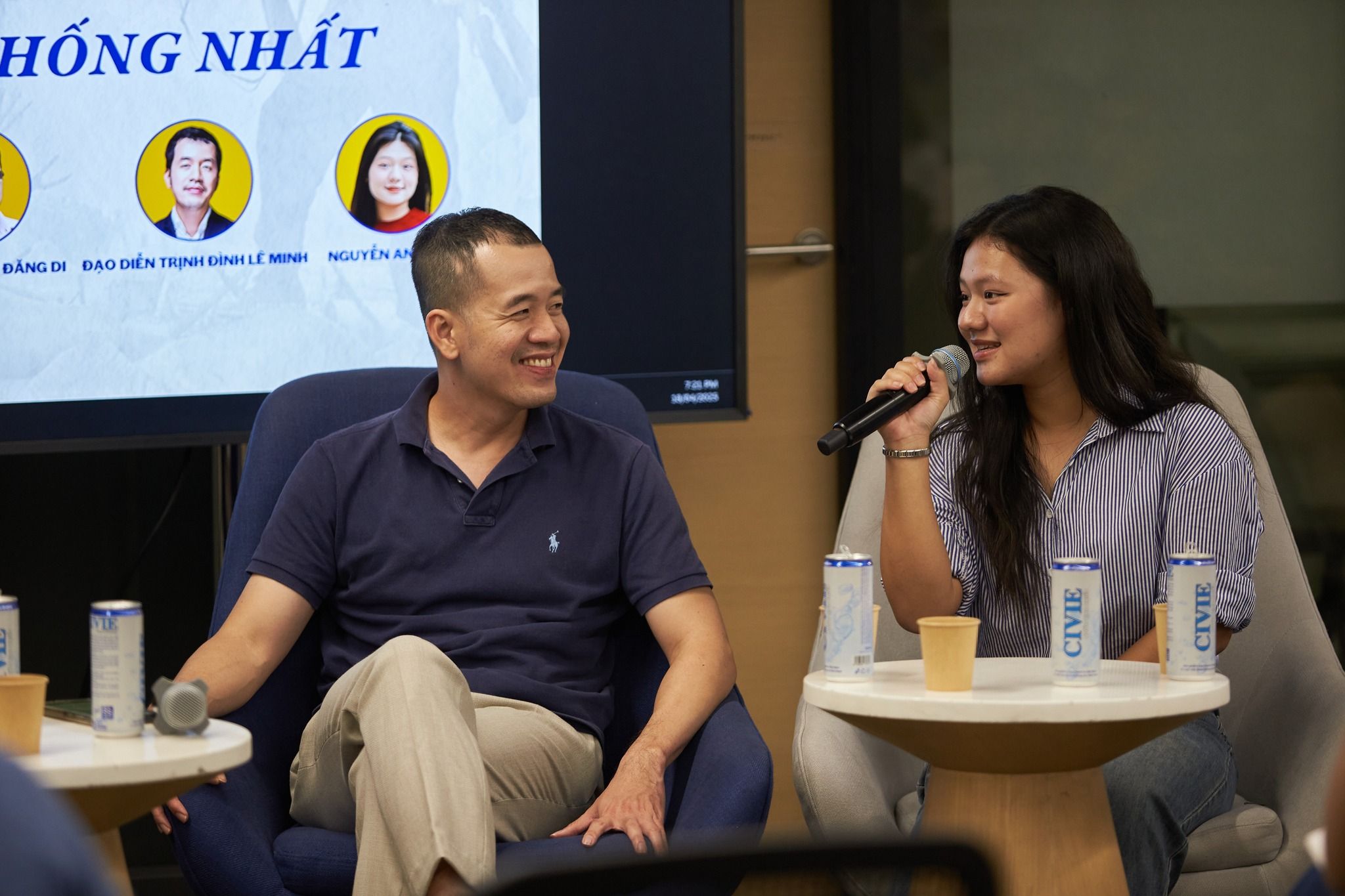
From a scholarly perspective, Dr. Nguyễn Nam emphasized:
"Cinema does not merely reflect war; it compels us to question national identity. Amid globalization and deglobalization, the most important thing remains the story of national identity."
For him, works like The Abandoned Field: Free Fire Zone (Cánh đồng hoang) and When the Tenth Month Comes (Bao giờ cho đến tháng Mười) demonstrate cinema’s ability to record "the humanity that survives war."
At the end of the roundtable, participants listened to an excerpt from The Sorrow of War about Kiên—the soldier who lives forever in the springtime of youth, love, and ideals:
"Unaffected by the erosion of forgetfulness, his soul forever lives in the springtime of feelings that have now faded or mutated. Thanks to this, he lives eternally in those painful yet glorious days, those unhappy yet deeply human days—days when we knew exactly why we had to enter the war, endure everything, and sacrifice everything. Days when everything was still young, pure, and sincere."
In this view, cinema—like literature—is a space where people select memories carefully, because there is too much to remember from a long, brutal war. The conversation invited young people to connect more deeply with the memories of older generations, to continue writing new pages from the ashes of war.
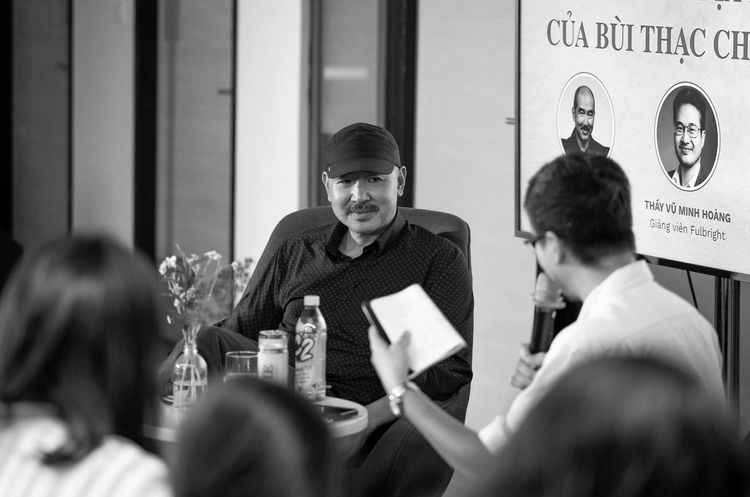
On April 14, as the opening event of Cinema Week, the Vietnam Studies Center at Fulbright University Vietnam, in collaboration with the Fulbright Digital Humanities Lab, hosted a conversation titled: “Reimagining History on Screen: The Journey of Địa Đạo with Director Bùi Thạc Chuyên.”
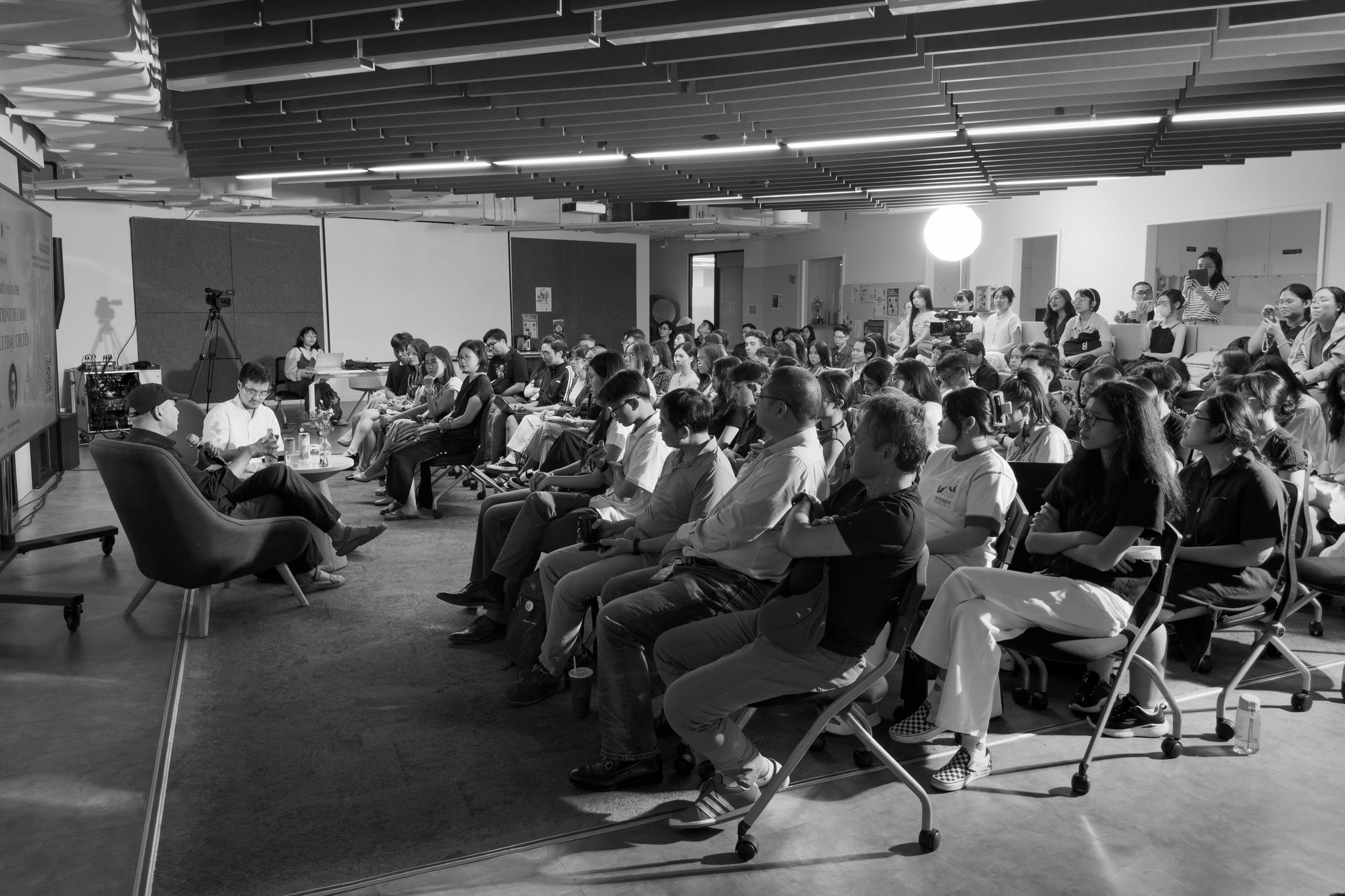
Director Bui Thac Chuyen shared his filmmaking journey with Fulbright students.
This event offered Fulbright students a rare opportunity to meet the acclaimed director behind this haunting film, listen to behind-the-scenes stories, and explore the deep challenges of portraying a fierce yet heroic chapter of Vietnamese history.
Speaking to the audience, director Bùi Thạc Chuyên shared that what touched him most during the making of Địa Đạo was capturing the monumental achievement of the Củ Chi Tunnels — a feat built entirely by the hands, minds, and resilience of the Vietnamese people.
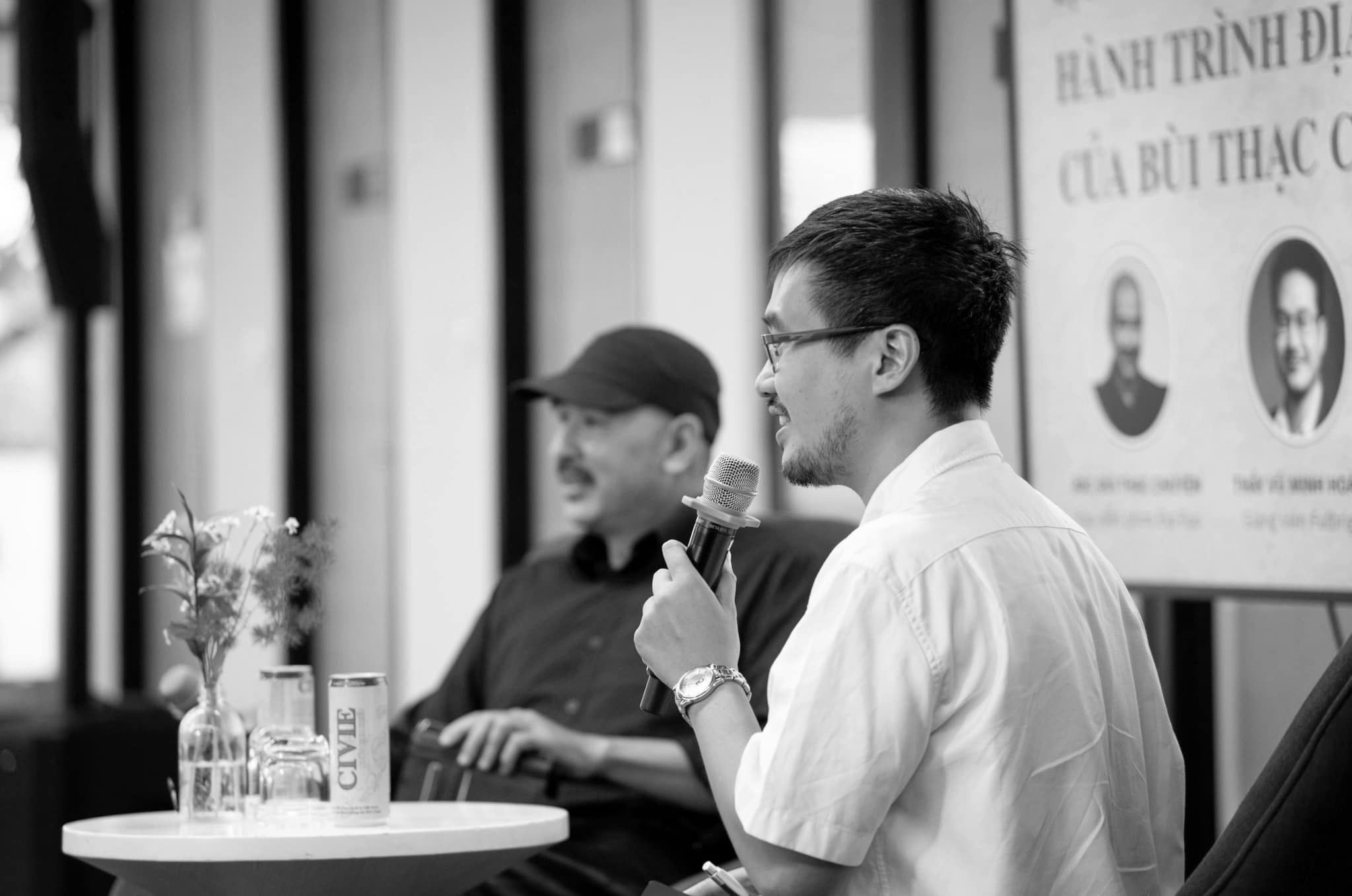
The discussion was led by Dr. Vu Minh Hoang, a key advisor of Digitizing Việt Nam.
In his view, what set the Củ Chi campaign apart was its nature as a true people’s war. Everyone contributed what they had — guns, bamboo traps, and most critically, unwavering spirit, unity, and determination.
“If we speak of strength, [the Americans] were certainly stronger, much stronger. The surface of Củ Chi was laid bare — trees and houses burned to the ground. Yet, the people remained. That was guerrilla warfare. That was people’s warfare. And that spirit of persistence is what the tunnels symbolize throughout the film: Hold on at all costs.”
The battle of Củ Chi stands as a profound testament to the guerrilla warfare model that Hồ Chí Minh and revolutionary leaders advocated — empowering grassroots forces to act independently and creatively. And once entrusted, the people fought with a remarkable ingenuity the world had never seen before.
More than a symbol of resilience and tactical brilliance, the Củ Chi tunnels embody a unique form of "organic" architecture — evolving day by day, shaped by urgent needs rather than rigid blueprints.
“Sometimes one would dig a tunnel branch and knock toward the other side, listening carefully. If sounds echoed back, it meant a tunnel was near — and they'd change direction to avoid colliding.”
For director Chuyên, filming within the tunnels posed a nearly insurmountable challenge: tight, dark, and stifling conditions made traditional cinematography almost impossible.
Thus, “Bringing Sunlight into Darkness” became not just a metaphor for the tunnels themselves, but also for the filmmaking effort — a journey to shed cinematic light on a subterranean history, hidden from the sun.
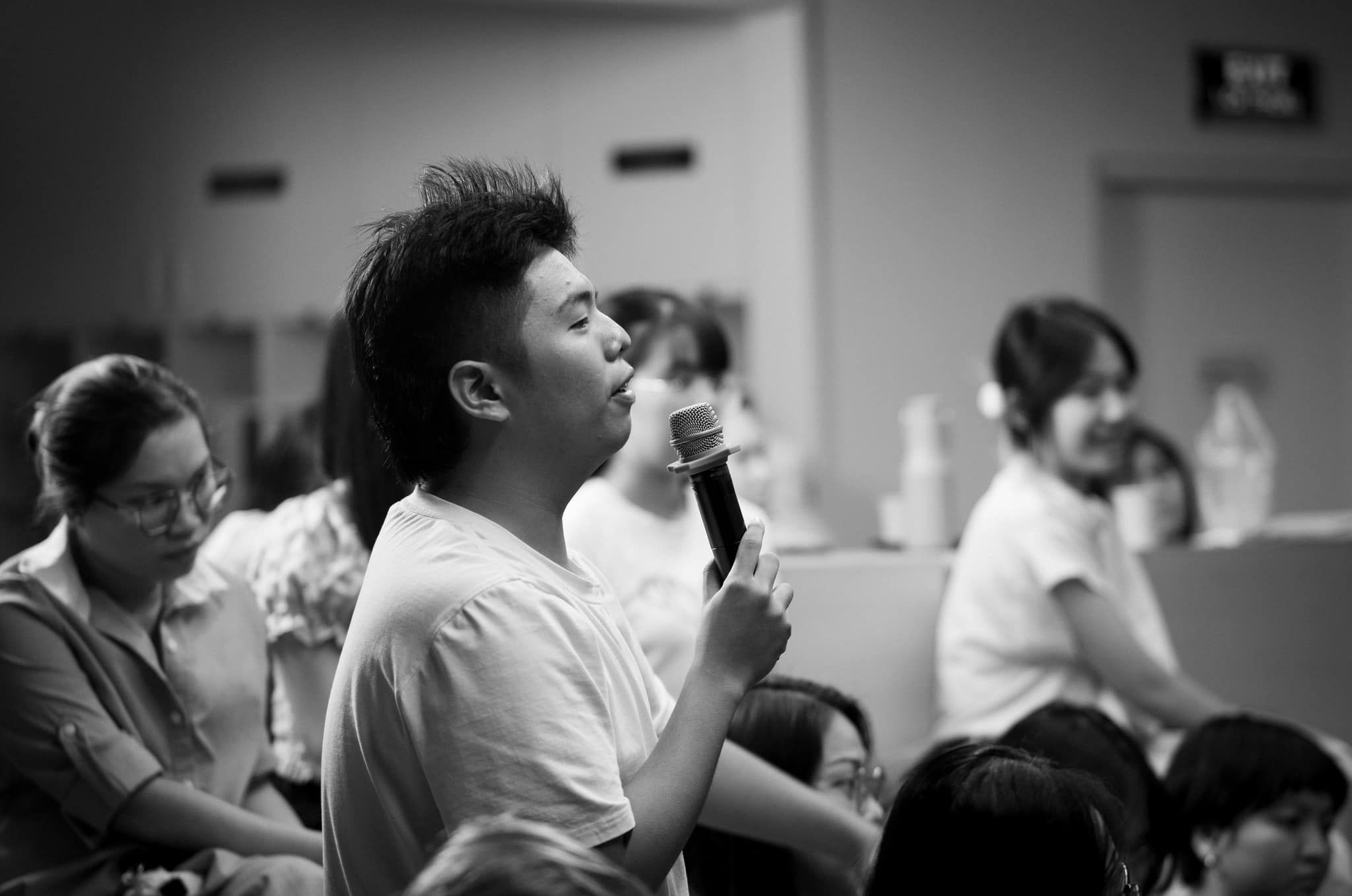
Fulbright students shared their curiosity about various details in the film.
When asked about the intimate scenes in Địa Đạo, the director responded candidly:
“A war film that’s only about fighting isn't truthful.”
Through in-depth interviews with living witnesses, he realized that behind the heroic narratives were countless everyday stories — deeply human, tender, and poignant.
Scenes of love, intimacy, and longing were integral to portraying the full spectrum of human experience during wartime. Soldiers were not mere fighters; they were people who loved, dreamed, and yearned for normalcy amidst chaos.
Regarding Út Khờ’s unborn child, director Chuyên deliberately left the question of paternity unresolved, embracing a documentary spirit that invites viewers to ponder and interpret.
“Marking 50 years of peace, I knew I had to do something meaningful.”
From the outset, Bùi Thạc Chuyên approached Địa Đạo not merely as a film project but as a mission to record living memory — by seeking out and listening to those who once lived and fought beneath the earth.
Many of them are no longer with us. In this sense, Địa Đạo serves as both a tribute and a spiritual legacy for future generations.
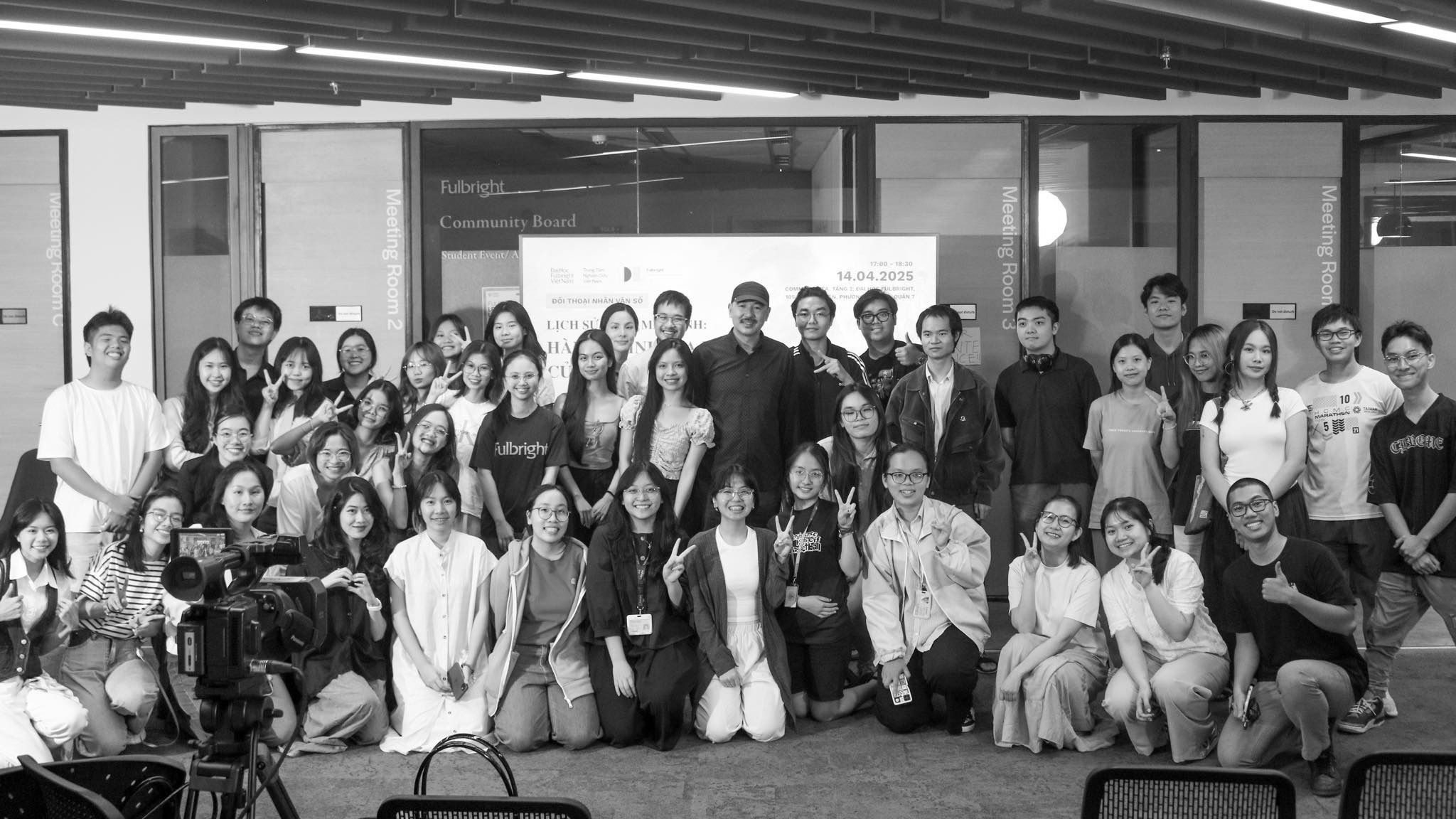
Fulbright students and staff took a souvenir photo with the director.
The film’s stark, emotional, and haunting imagery transported audiences back to a time when war raged fiercely — but so too did humanity and love. For today's youth, it offered a moving glimpse into the brutal realities and profound sacrifices of those who came before.

Titled 50–30: From War to Peace in Vietnam and the U.S, this special event series will take place from April 30 to May 2, 2025, at Columbia University in New York, marking two major milestones: the 50th anniversary of the end of the Vietnam War and the 30th anniversary of the normalization of diplomatic relations between Vietnam and the United States.
Organized by Global Vietnam Studies at the Weatherhead East Asian Institute, in collaboration with partners including the Columbia Journalism School, Columbia Global, and the School of the Arts, the program will feature panel discussions, film screenings, exhibitions, and cultural dialogues.
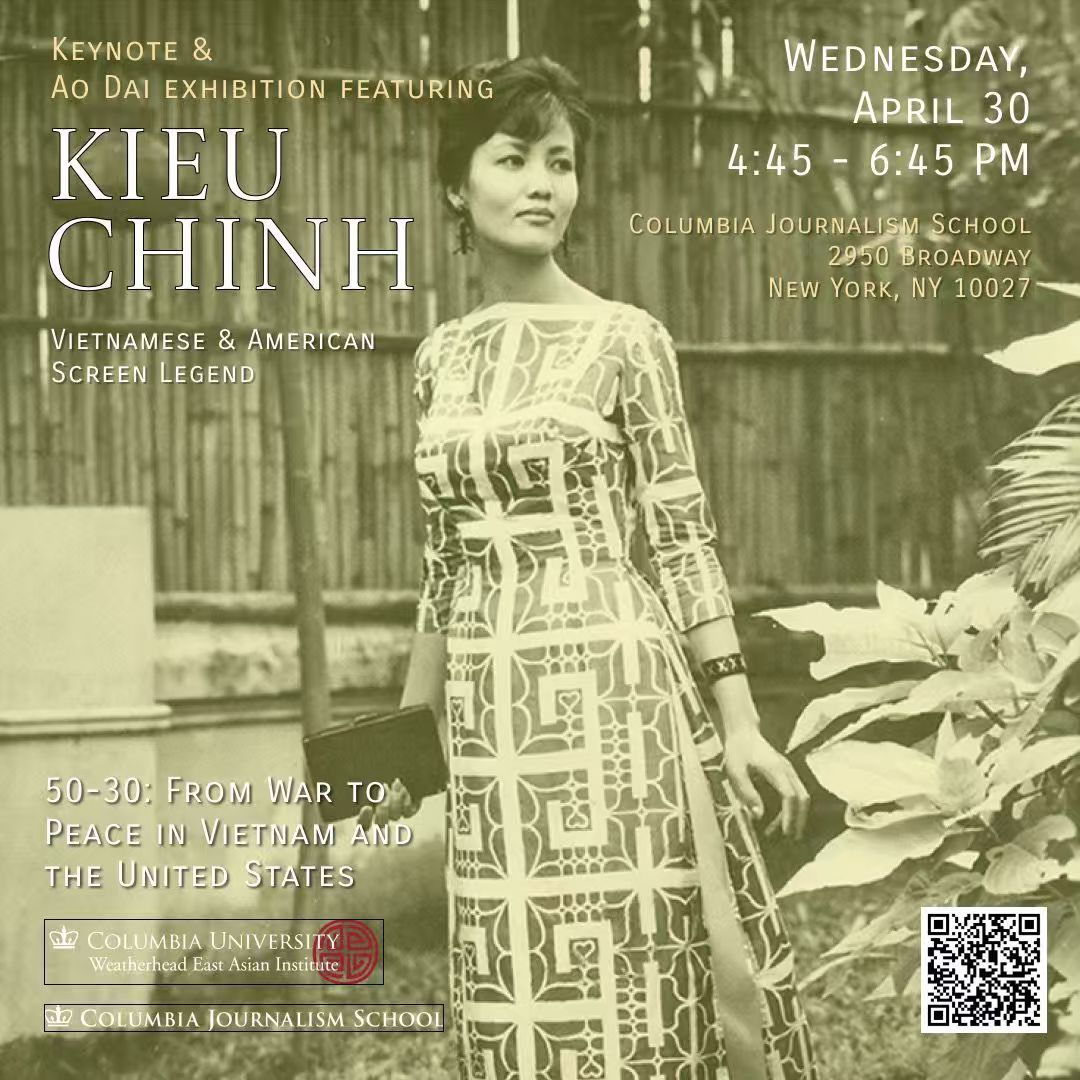
The series aims to open up space for diverse perspectives on the war and the path to peace, revisit conversations left unresolved in the arts and culture, and reflect on the lessons these histories hold for the future of U.S.–Vietnam relations and global conflict resolution.
Bringing together leading historians, writers, filmmakers, artists, veterans, and historical figures from both the war and the reconciliation process, 50–30 promises to be a meaningful and thought-provoking commemoration of these significant anniversaries.
For more details, visit the official WEAI event page.
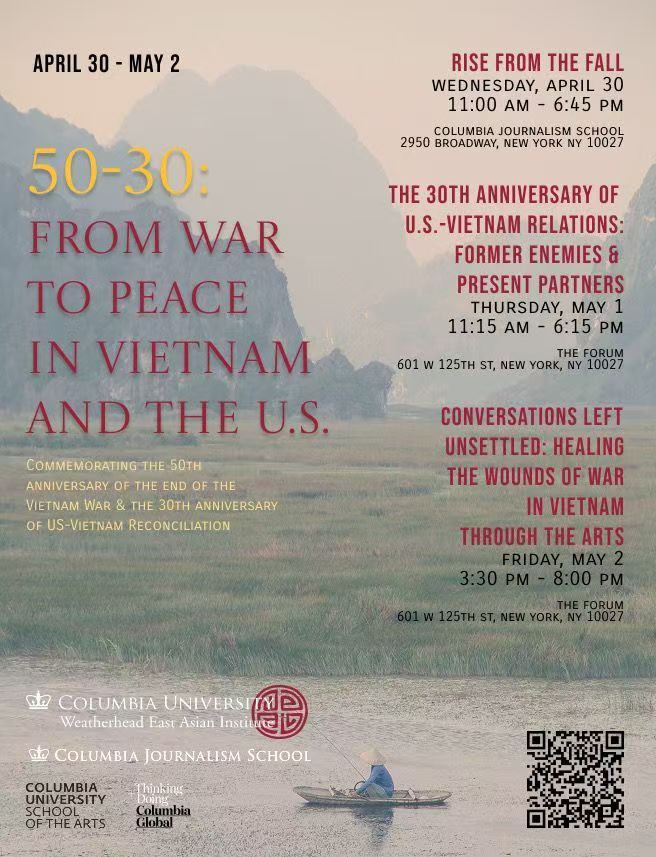
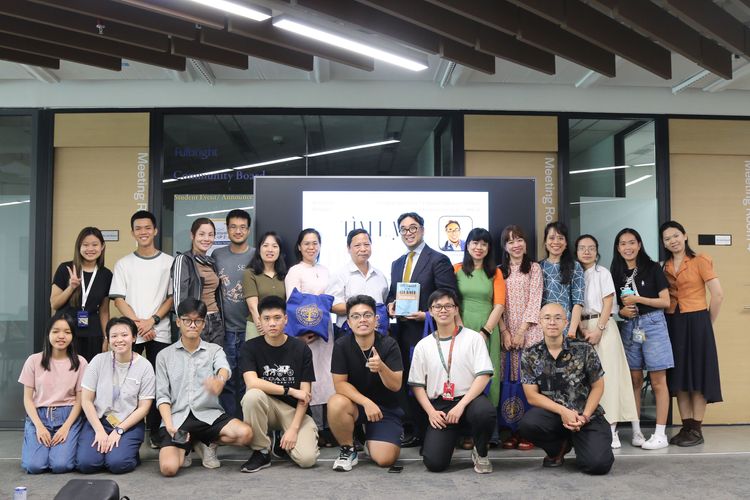
The Digitizing Vietnam project—a major digital humanities initiative dedicated to preserving and promoting Vietnamese heritage—officially launched its public website on April 11, 2025, during the event “Tongues Lost & Found: Preserving Vietnamese Heritage for Future Generations” at Fulbright University Vietnam.
A collaborative effort between the Vietnam Studies Center and the Weatherhead East Asian Institute at Columbia University, Digitizing Vietnam is supported by the Henry Luce Foundation. The project aims to provide open access to a growing body of digitized Vietnamese cultural materials while equipping researchers, educators, and the public with powerful tools for engagement.
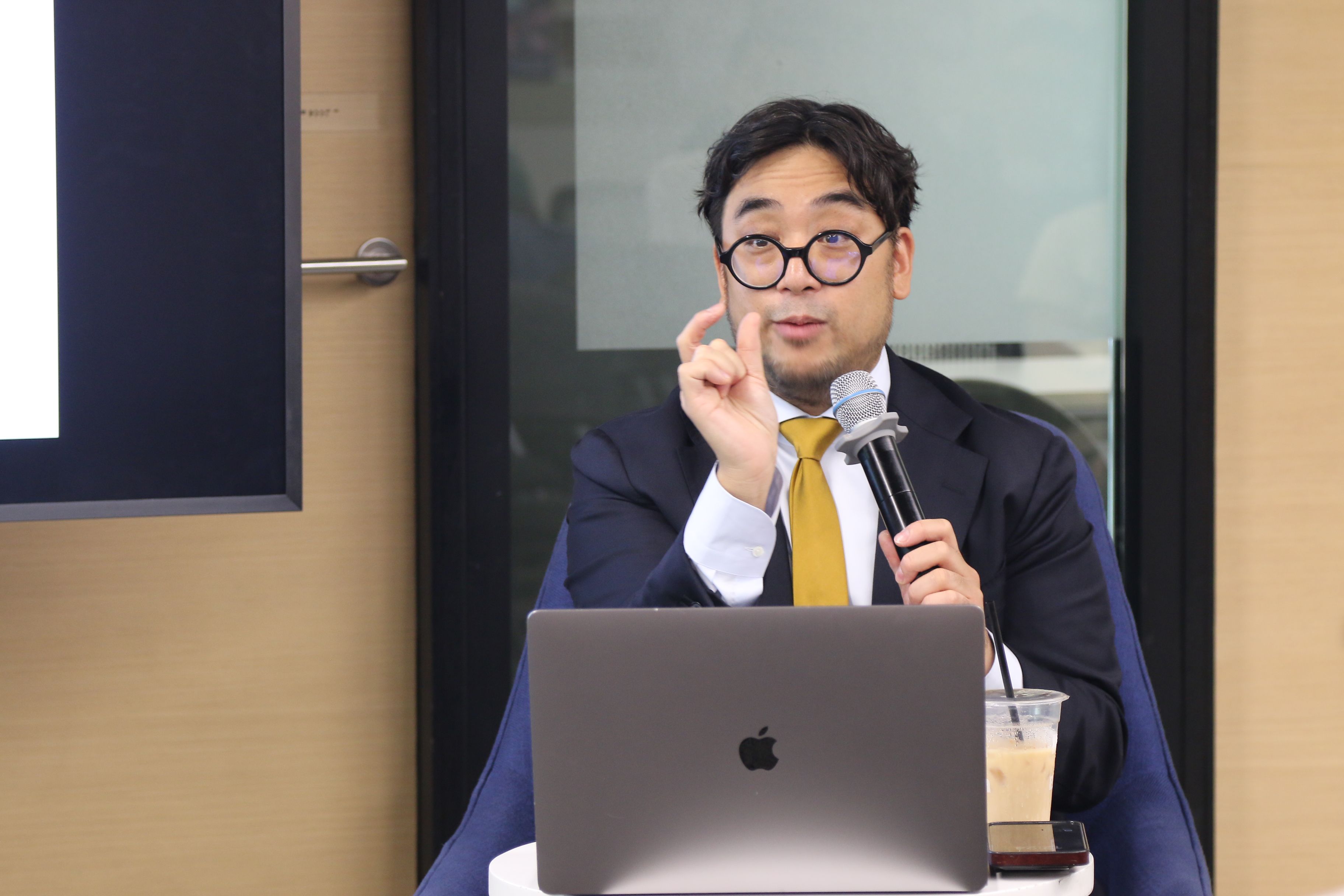
Prof. John Phan discussed his latest work on the Vietnamese language.
The launch event featured keynote speaker Professor John Phan (Columbia University), whose presentation “Lost Tongues of the Red River: Annamese Middle Chinese and the Origins of the Vietnamese Language” highlighted the rich, multilingual origins of Vietnamese and challenged monolithic views of national linguistic identity.
At the center of the event was the unveiling of the Digitizing Vietnam platform, which houses:
The platform currently showcases a wide range of collections, including:
Noteworthy contributions also include rare film and manuscript materials, such as a special edition of the 1924 adaptation Kim Vân Kiều, which offer critical value for studies in adaptation and cultural continuity.
Digitizing Vietnam is also developing a number of digital tools to support researchers and students alike:
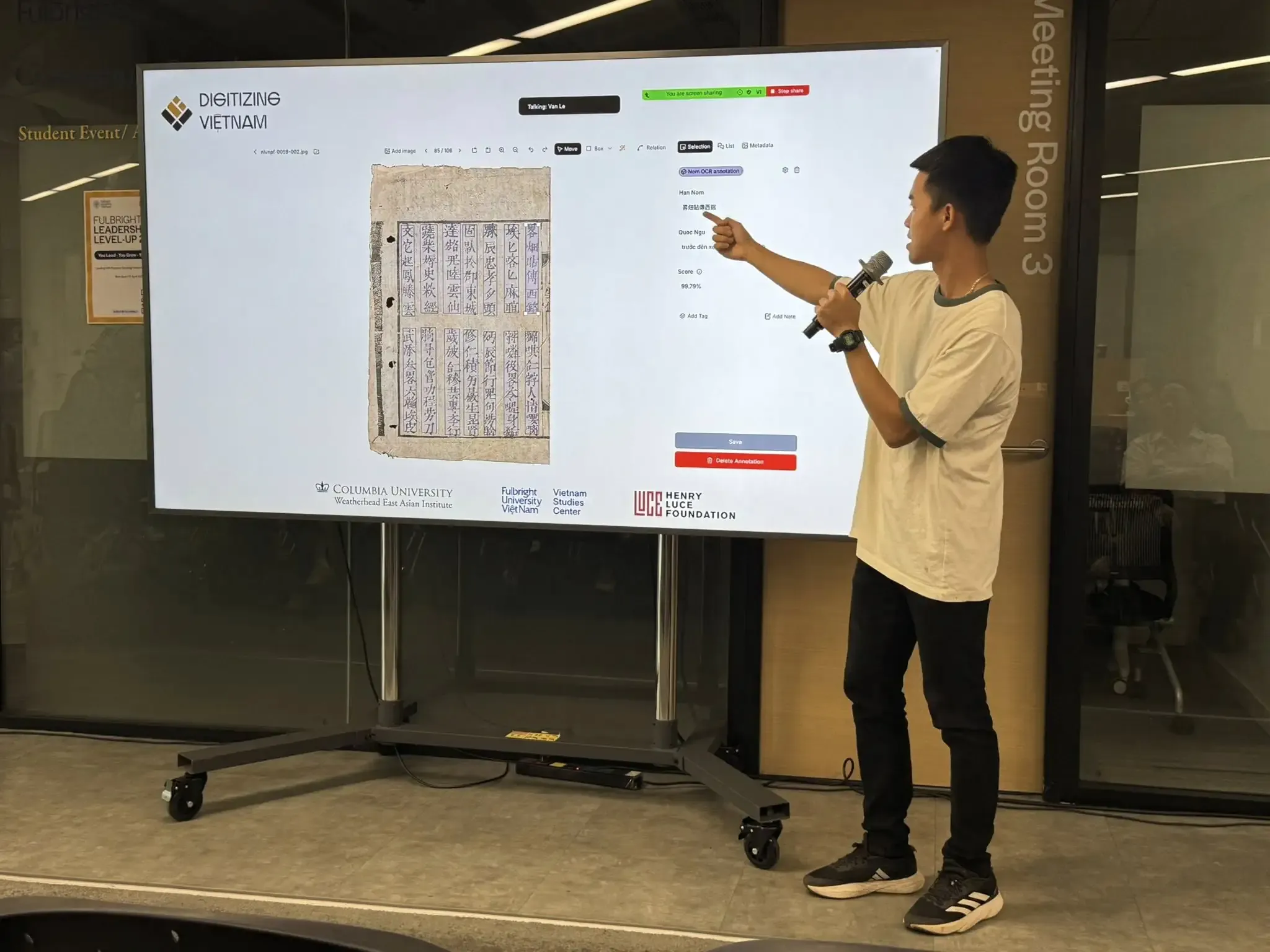
Fulbright Computer Science alumnus Lê Hoàng Phúc, Digitizing Việt Nam Core Team Member, demonstrated how the Image OCR Platform works.
The event also welcomed Associate Professor Dr. Đinh Điền, who led a live demonstration of Kim Hán Nôm, a Sino-Nom translation tool developed at the University of Science (VNU-HCM). Earlier this year, Digitizing Vietnam contributed 4.7 TB of Sino-Nom data from Columbia University’s archives to enhance the tool’s recognition and translation capabilities.
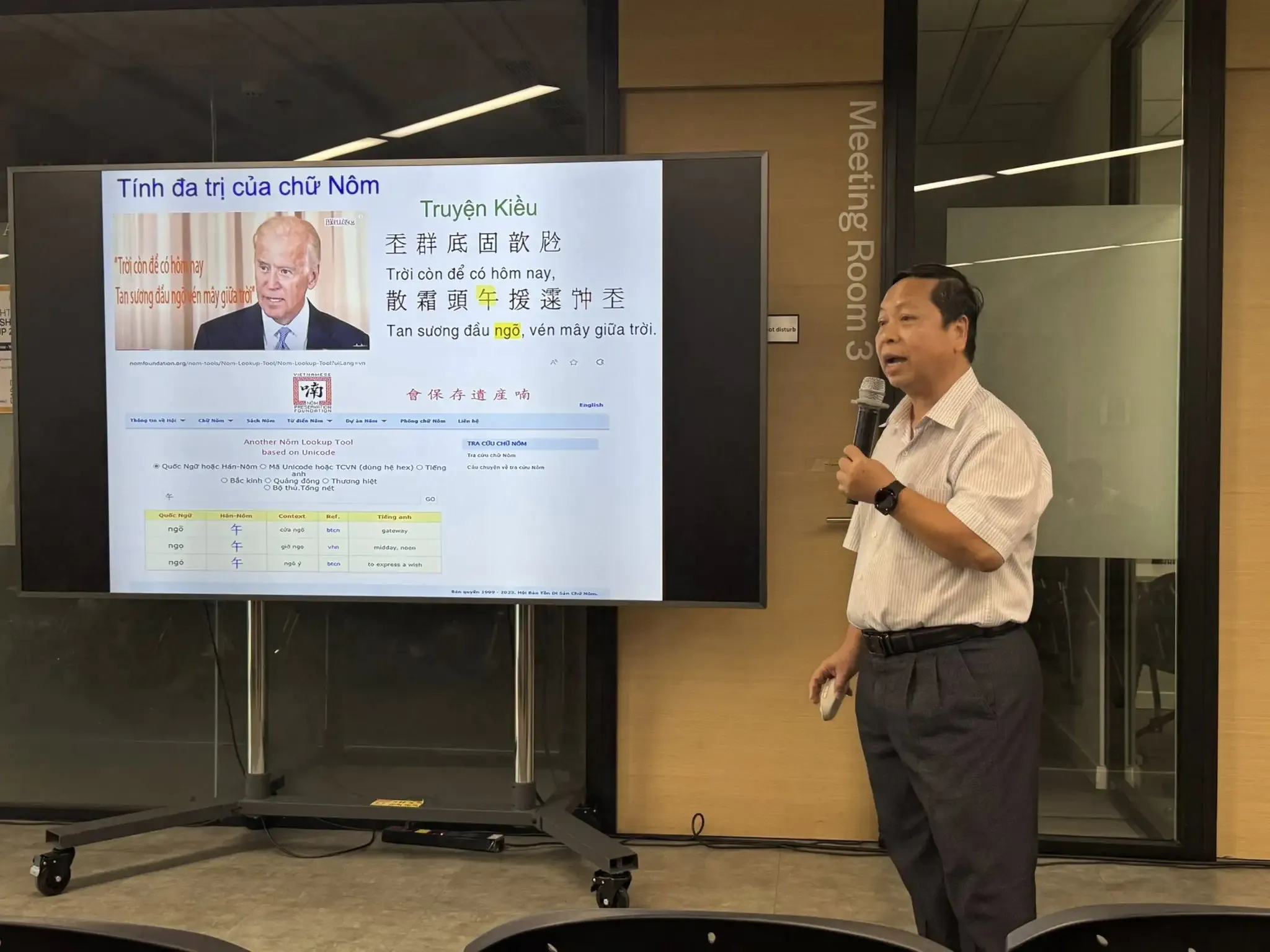
The event also welcomed Associate Professor Dr. Đinh Điền, who directly guided the audience in using the Sino-Nom translation tool developed by the University of Science, VNU-HCM.
This translation tool is now housed in the platform’s Digital Humanities Tools Library, where it is accessible for further scholarly use and community improvement. Researchers are encouraged to contribute annotation data to continuously refine its accuracy and functionality.
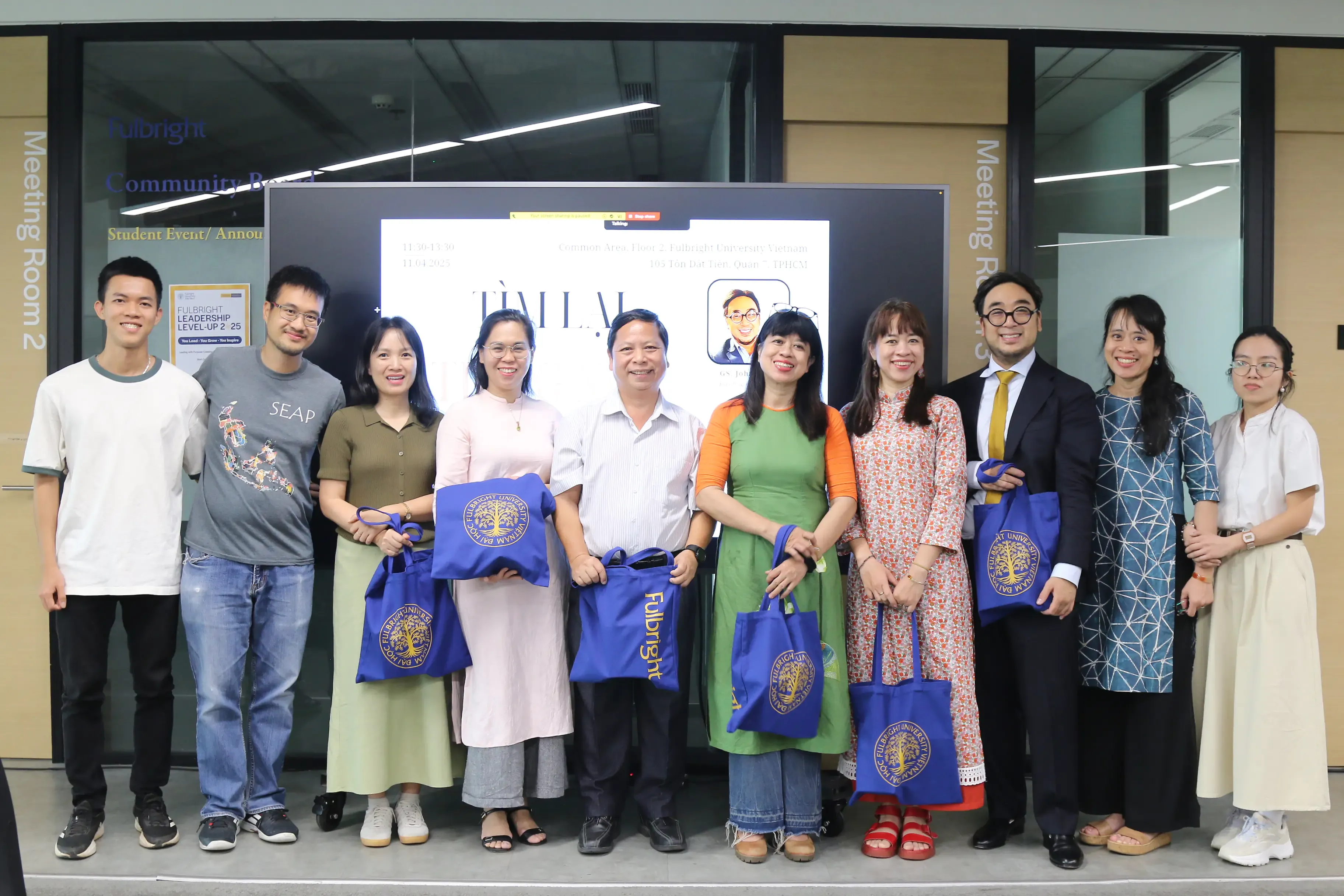
The core team along with advisors & donors
By combining rigorous research, rare archival content, and open-access digital tools, Digitizing Vietnam opens new pathways for learning and re-engagement with the country’s complex cultural and linguistic heritage. The project affirms that even in the digital age, Vietnam’s stories—etched in woodblocks, whispered in verse, and preserved in memory—can be traced through digital ink.

The Vietnam Studies Center, Fulbright University Vietnam, is delighted to invite you to a special online lecture as part of our Vietnamese Culture Forum—a collaborative series with the Department of Vietnamese Studies at the University of Hamburg.
Memories, Tragedies, Beauty, and Resilience: An Afternoon with Dr. Nguyễn Phan Quế Mai
Date: Tuesday, 8 April 2025
Time: 4:00 PM – 5:30 PM (CEST) / 9:00 PM – 10:30 PM (Vietnam Time)
Location: Zoom Webinar
🔗 Join via Zoom Link
Webinar ID: 680 7584 0760
Password: 86140299
📝 Registration: https://forms.office.com/r/aZCmZY7YQL
Dr. Nguyễn Phan Quế Mai is one of Vietnam’s most celebrated contemporary authors. Writing in both Vietnamese and English, her works—including The Mountains Sing and Dust Child—have received critical acclaim for their powerful storytelling and exploration of Vietnam’s complex history. Her literary voice resonates with themes of memory, trauma, resilience, and beauty, offering deeply human perspectives on the past and present.
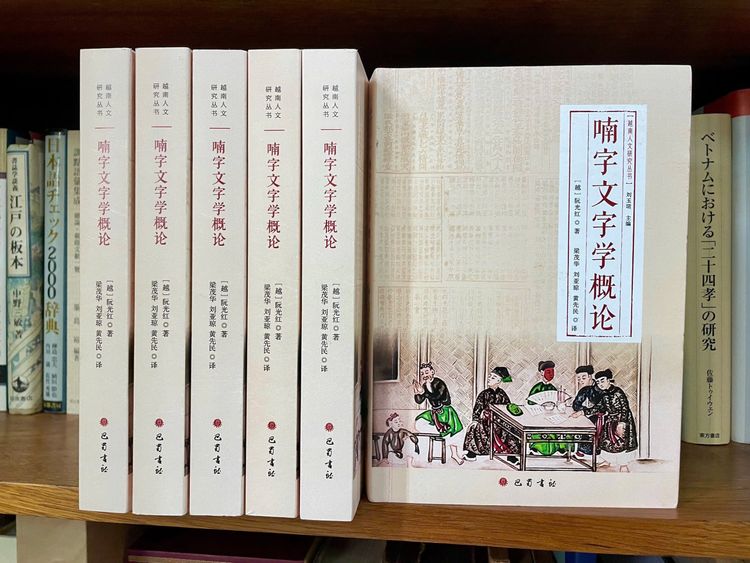
The scholarly monograph An Introduction to Chu Nom Grammatology by Prof. Nguyễn Quang Hồng, which was awarded the State Prize in Science and Technology in 2017, has now been officially introduced to Chinese readers through its newly published Chinese edition. Released by Bashu Publishing House in December 2024, the book comprises 520 pages and is part of the Vietnamese Humanities Research Series, curated by Prof. Liu Yuqun.
The Chinese translation was meticulously executed with high professionalism and dedication by translators Liang Maohua, Liu Yaqun, and Huang Tiandan. The translation process began before the COVID-19 pandemic and went through multiple stages of revision and refinement to ensure accuracy and relevance for a Chinese-speaking audience. After years of dedicated efforts, the translated edition was officially completed and published at the end of 2024.
The Vietnamese Humanities Research Series, curated by Prof. Liu Yuqun, is an essential collection that brings together significant research on the languages and cultures of Vietnam’s ethnic minorities. The publication of this Chinese translation marks an important step in bridging scholarly exchanges between Vietnam and China, making invaluable knowledge about the Nom script more accessible to a broader audience.
📖 Read the 2009 book review [here].
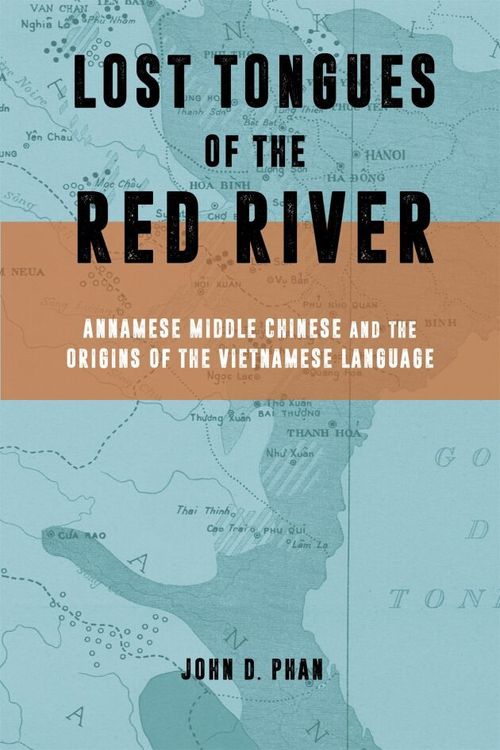
Event Details:
Date: Thursday April 17th, 2025 , 6:15pm EDT
Location: The Heyman Center, Second Floor Common Room, Columbia University
Virtual Registration: Click Here
Book Content Overview:
The Vietnamese language offers a distinctive perspective on the vibrant and interconnected world of premodern Asia. Contemporary approaches to language history are often shaped by nationalist frameworks that seek to reinforce a specific nation’s cultural, social, or political identity. However, a deeper exploration of Vietnamese reveals a complex history of exchange and evolution that transcends the boundaries of modern nation-states.
Utilizing philological, textual, and comparative linguistic analysis, John D. Phan reconstructs the trajectory of a Sinitic language that once thrived in northern Vietnam’s Red River Plain—what he terms “Annamese Middle Chinese.” The rise and eventual decline of this language set in motion profound linguistic shifts, ultimately leading to the emergence of Vietnamese in the early centuries of the second millennium.
By weaving together linguistic, demographic, intellectual, and cultural threads, Phan situates the development of Vietnamese within the broader landscape of East and Southeast Asia’s cosmopolitan past. Lost Tongues of the Red River reveals how language serves as an intimate record of human interaction, offering invaluable insights into the complexities of history and deepening our understanding of the past.
About the Author
John D. Phan, Assistant Professor of Vietnamese Humanities at Columbia University, studies language history to uncover social and political dynamics, focusing on Sino-Vietic contact and the vernacularization of early modern Vietnamese society.
Experts Speaking at this Event
Mark Alves has taught ELAP courses at Montgomery College, researched Southeast Asian linguistics, co-authored ESL materials, and served as Editor-in-Chief of the Journal of the Southeast Asian Linguistics Society since 2015.
Robert Hymes, Carpentier Professor of Chinese History at Columbia University, specializes in the social and cultural history of middle period and early modern China, with a focus on elite culture, kinship, medicine, religion, and social networks.
David Lurie, a professor at Columbia University, specializes in premodern Japanese history and literature, focusing on writing systems, linguistic thought, mythology, and the Japanese reception of Chinese texts.
Gray Tuttle, Leila Hadley Luce Professor of Modern Tibetan Studies at Columbia University, specializes in modern Tibetan history and Sino-Tibetan relations, focusing on Buddhism’s role and Tibet’s ties with the Qing Empire.
---
For more details, visit the official SOFHCH event page.